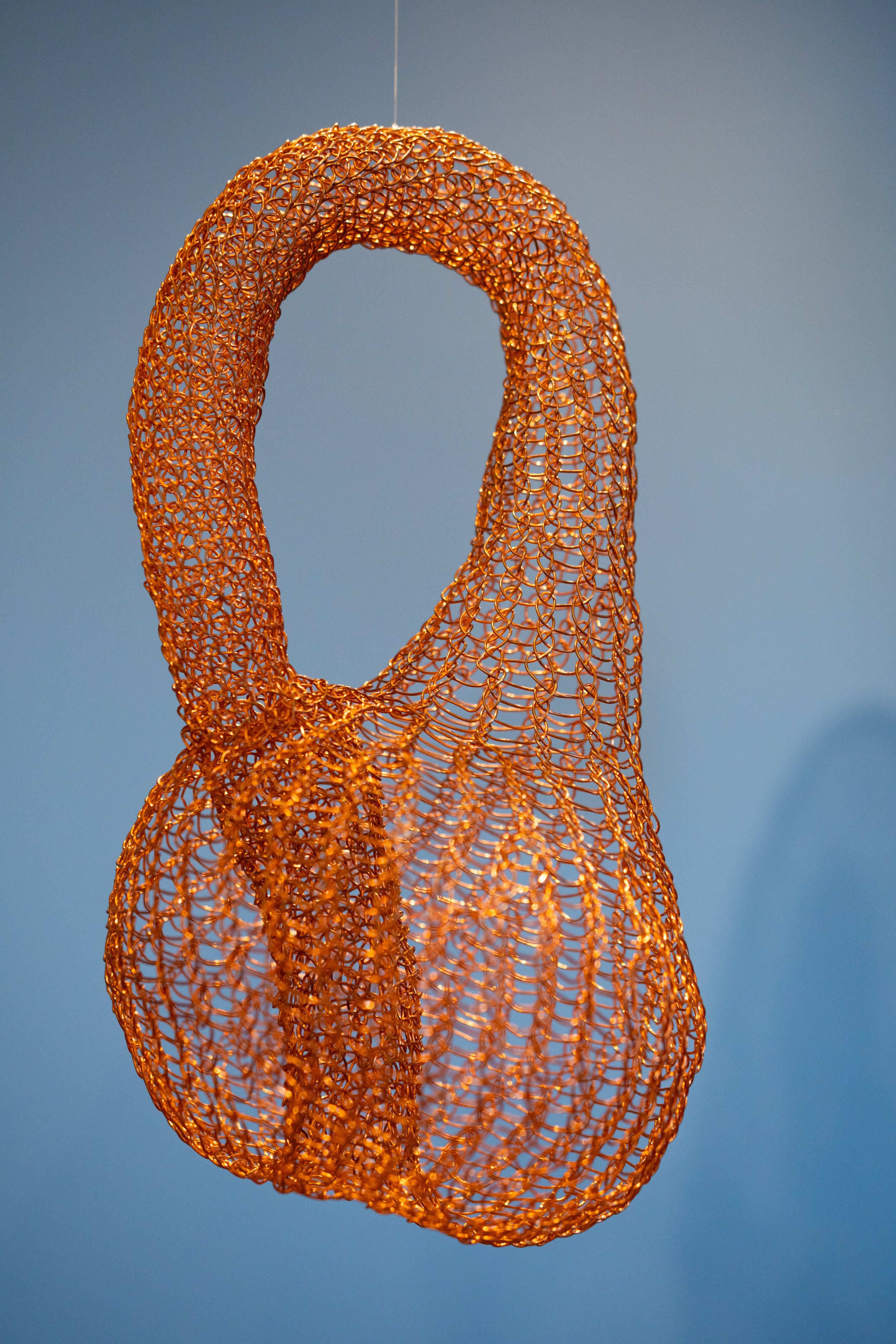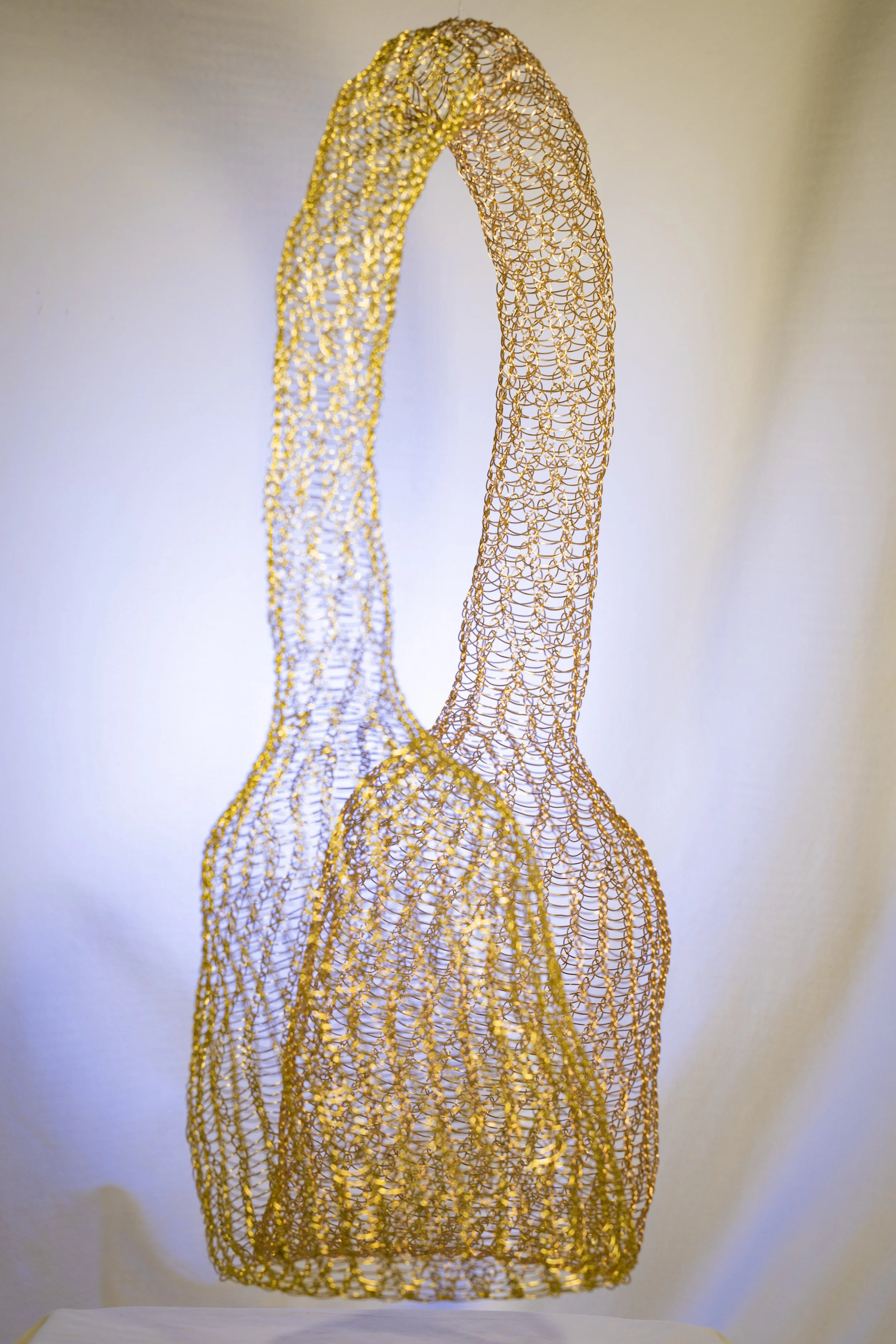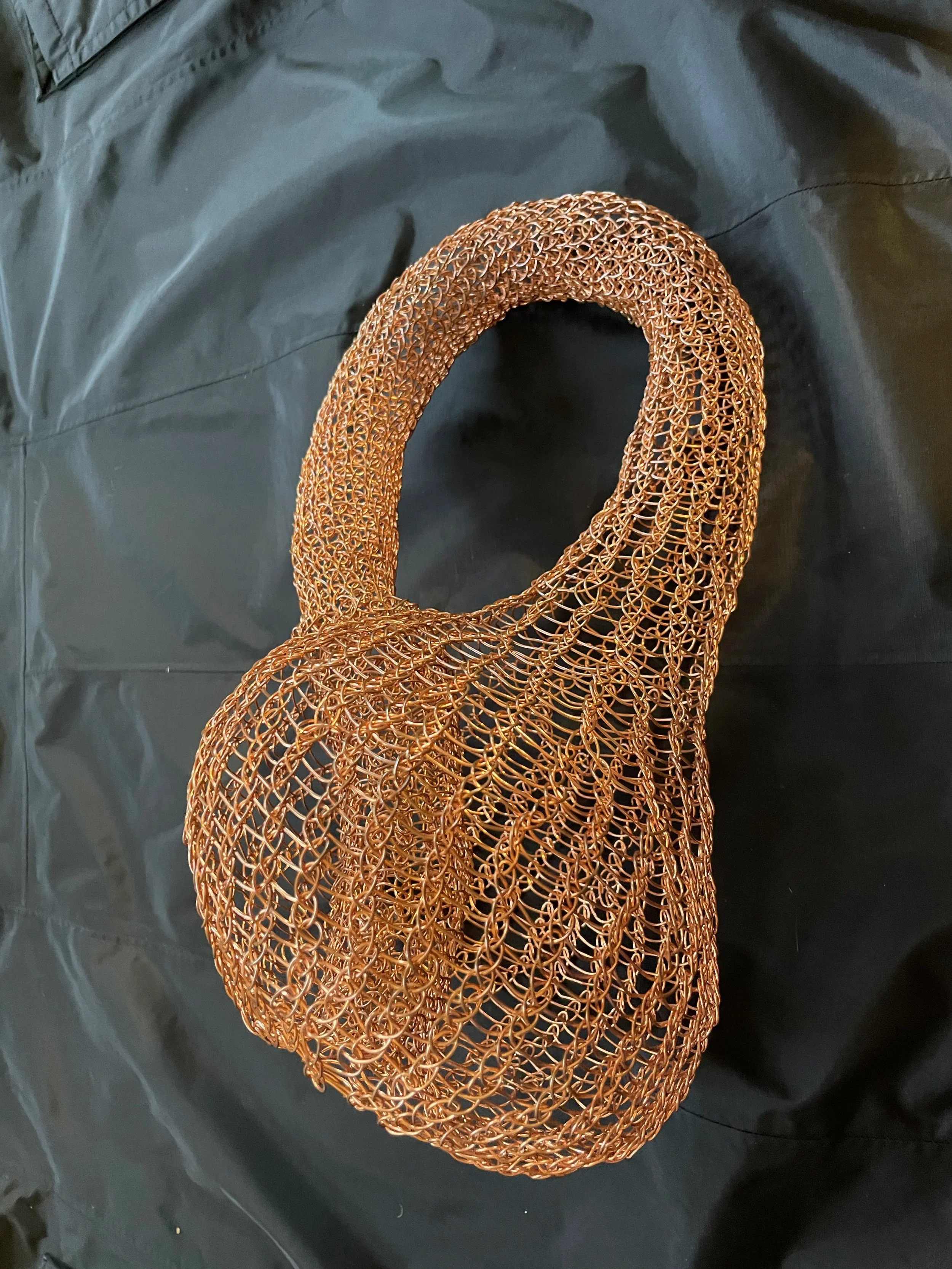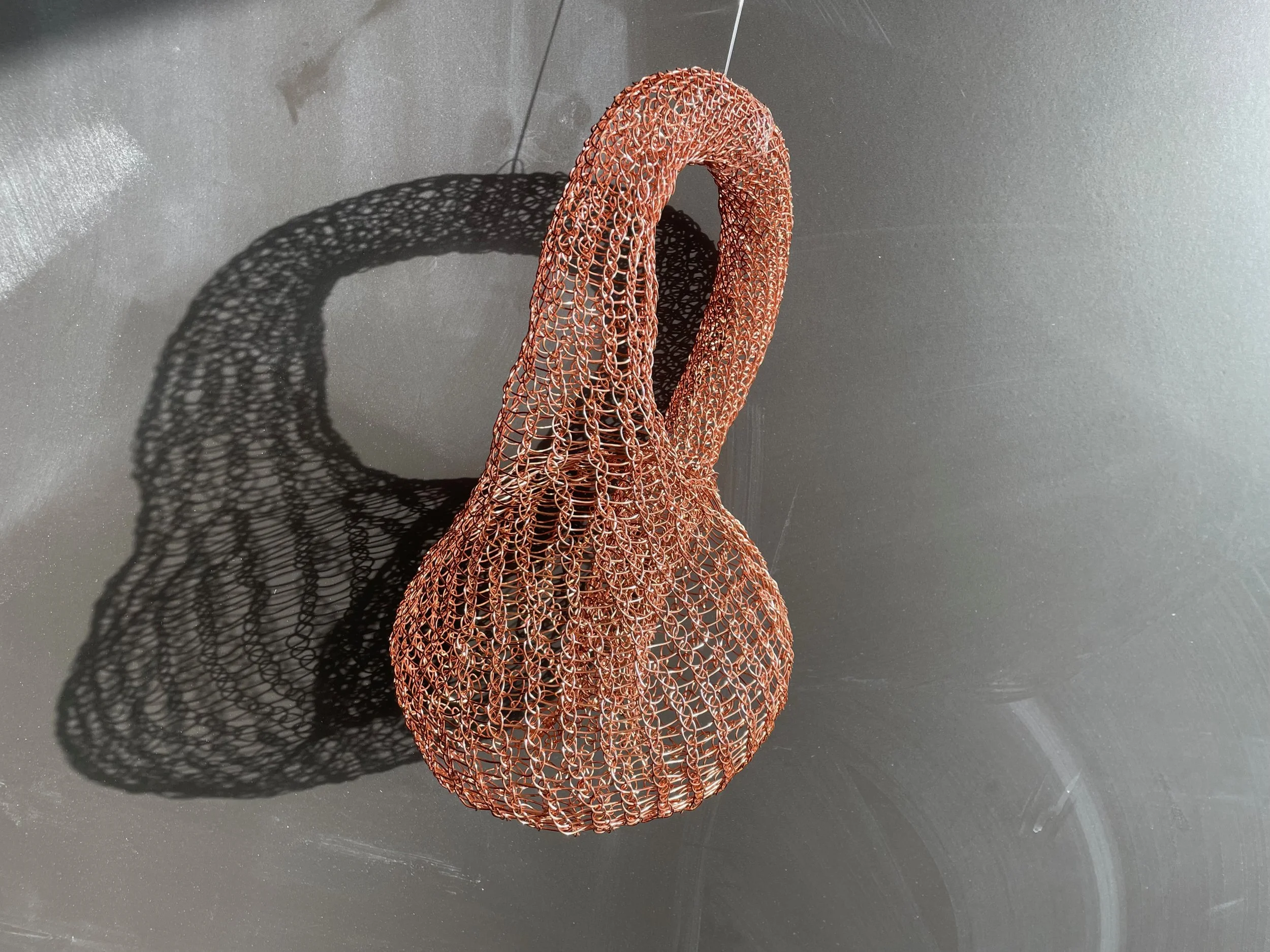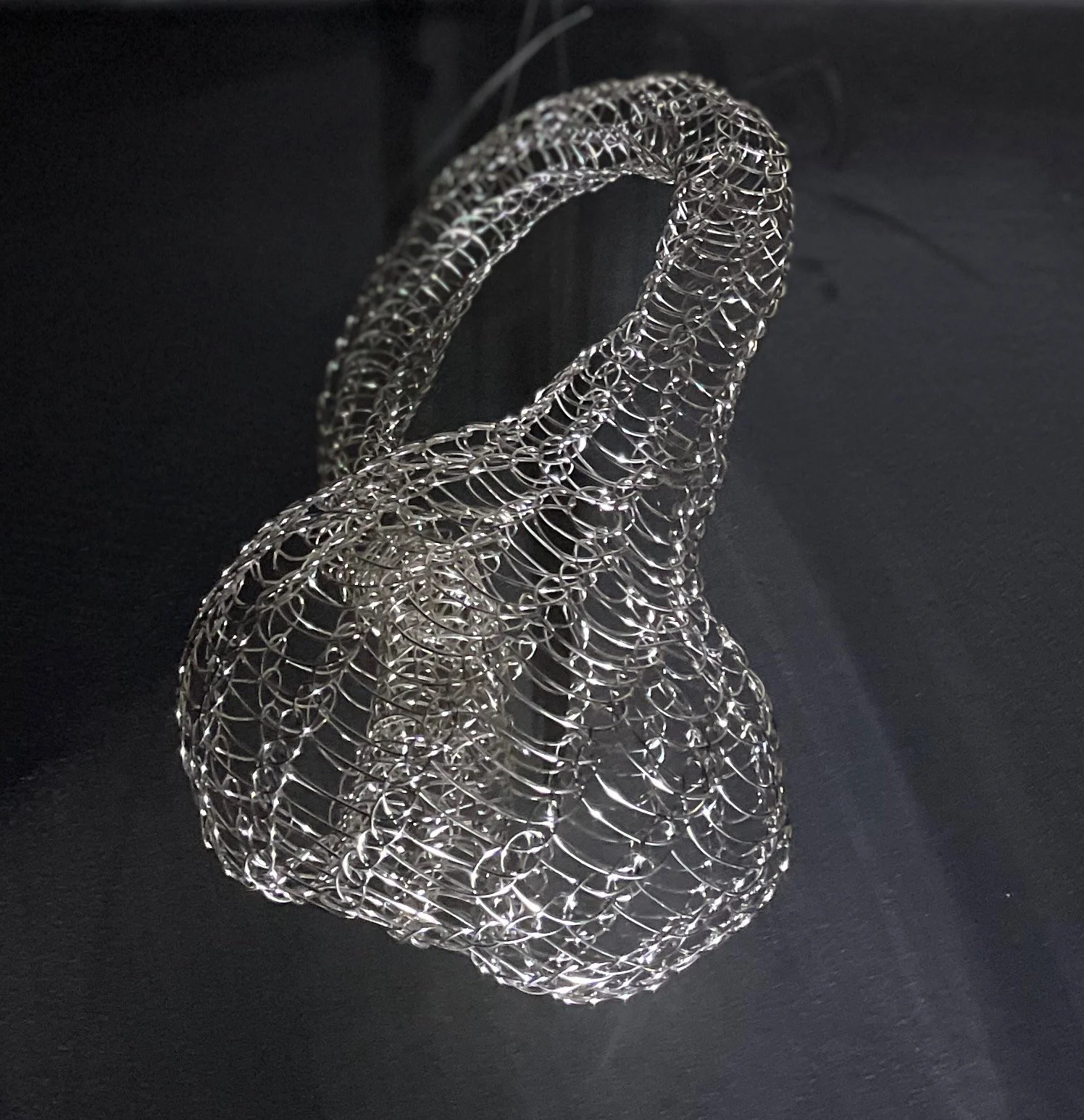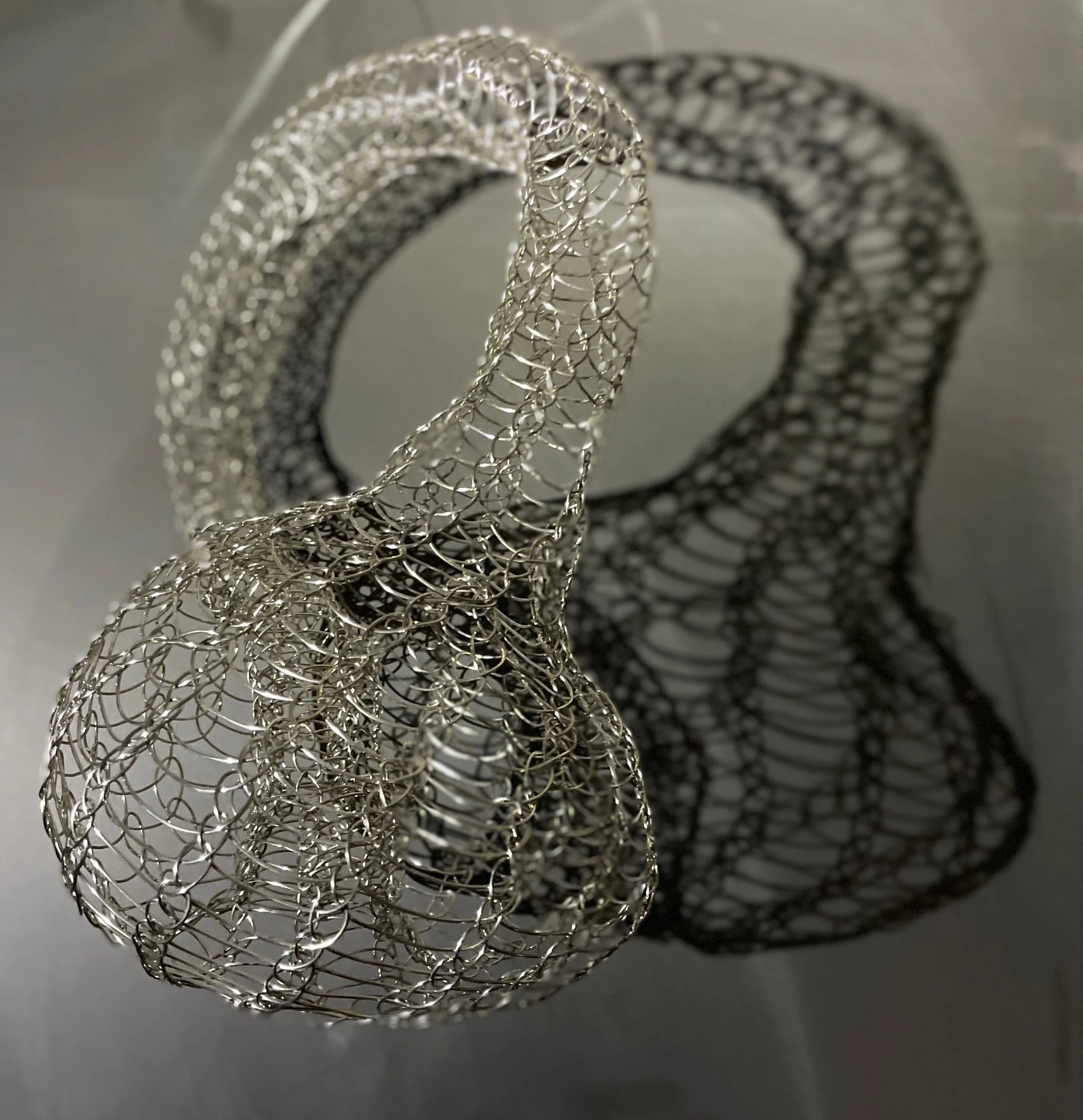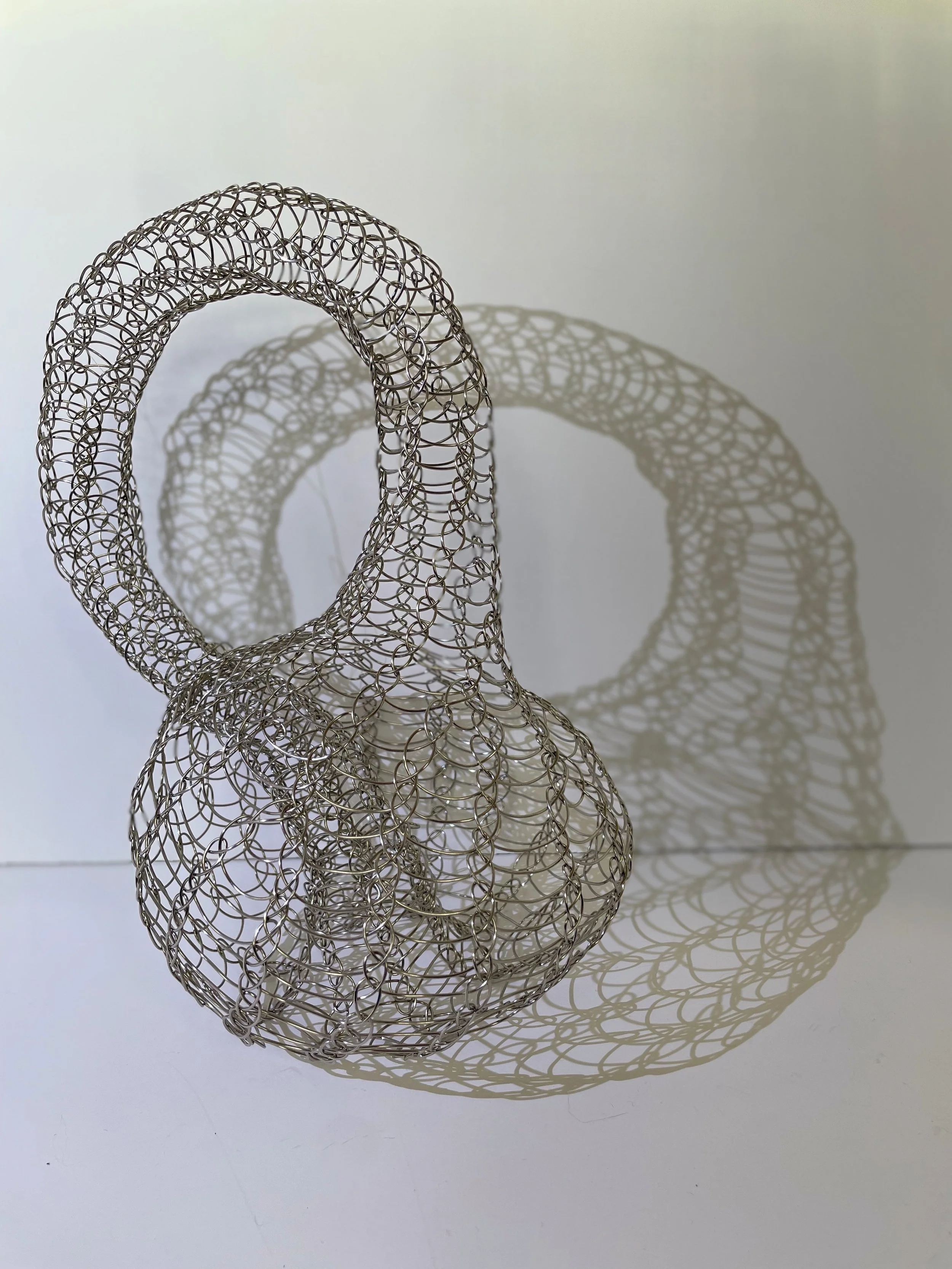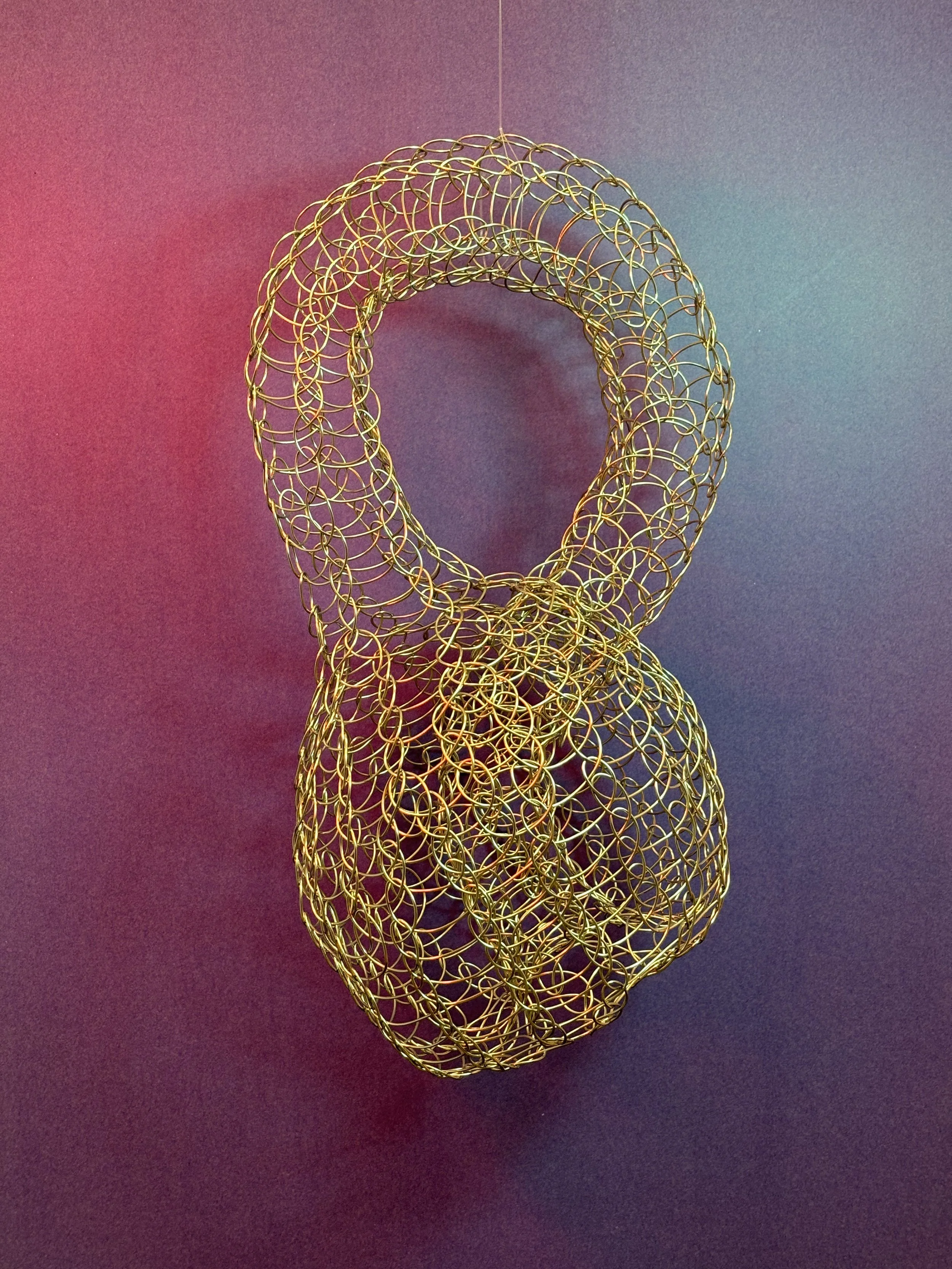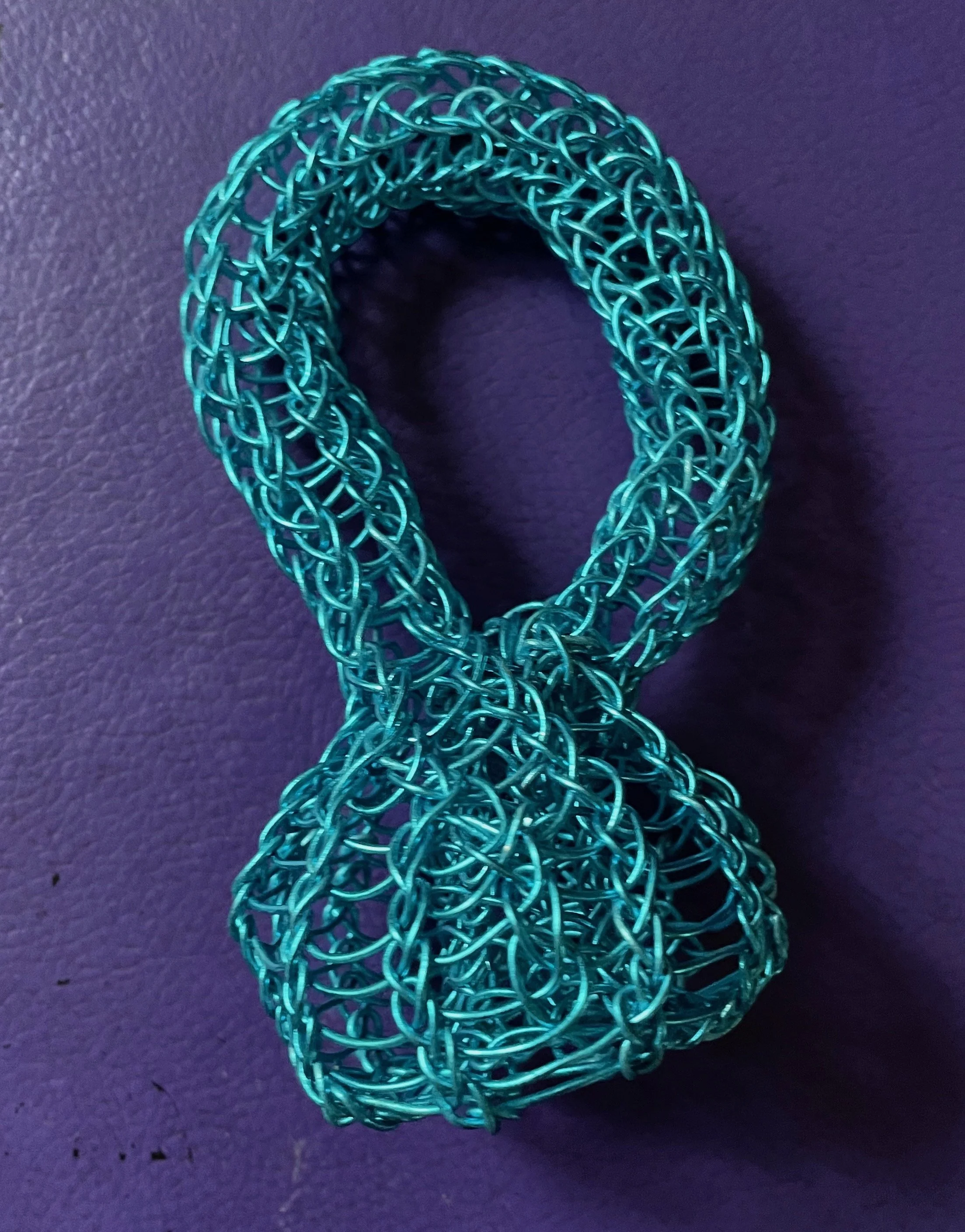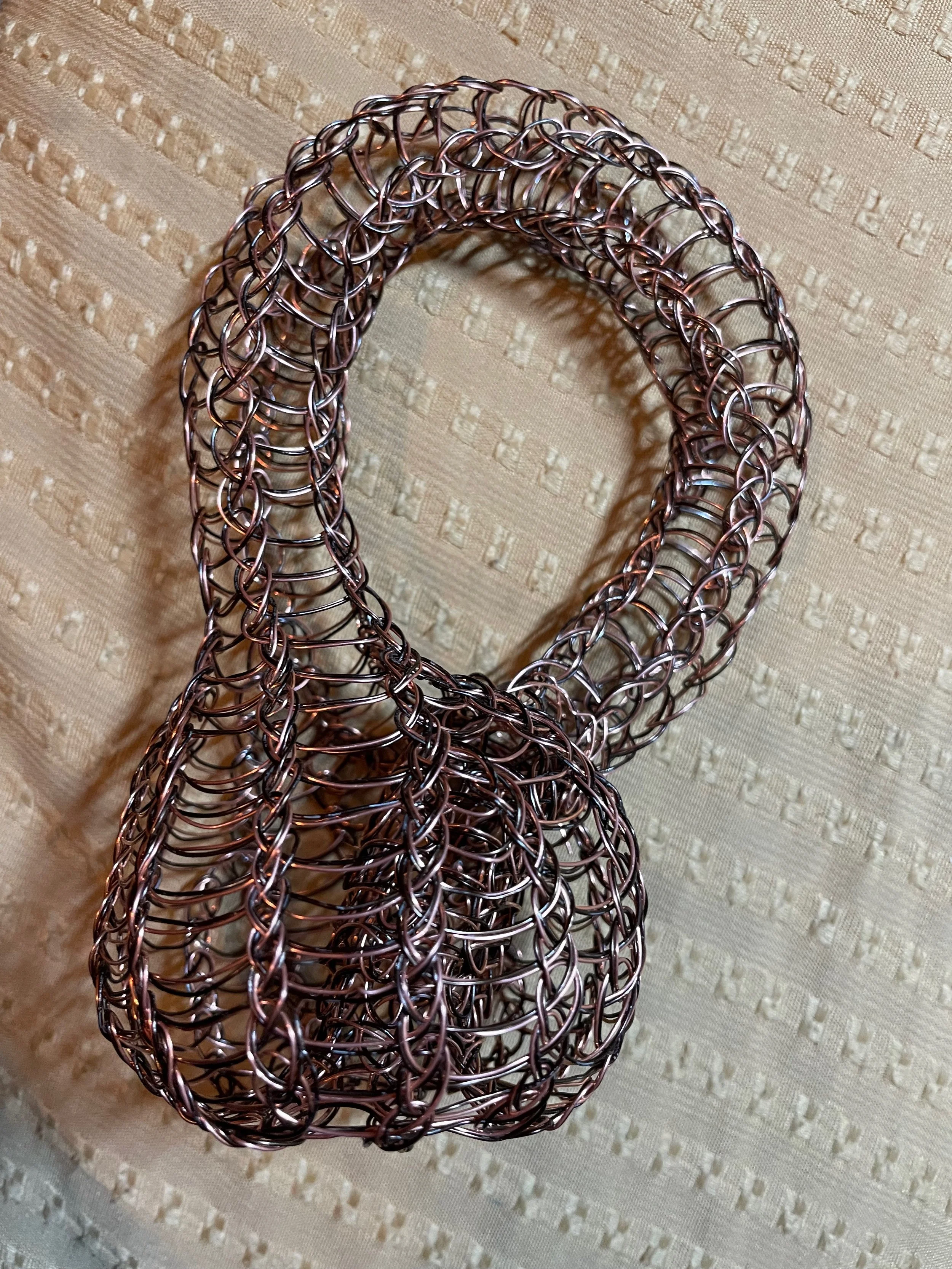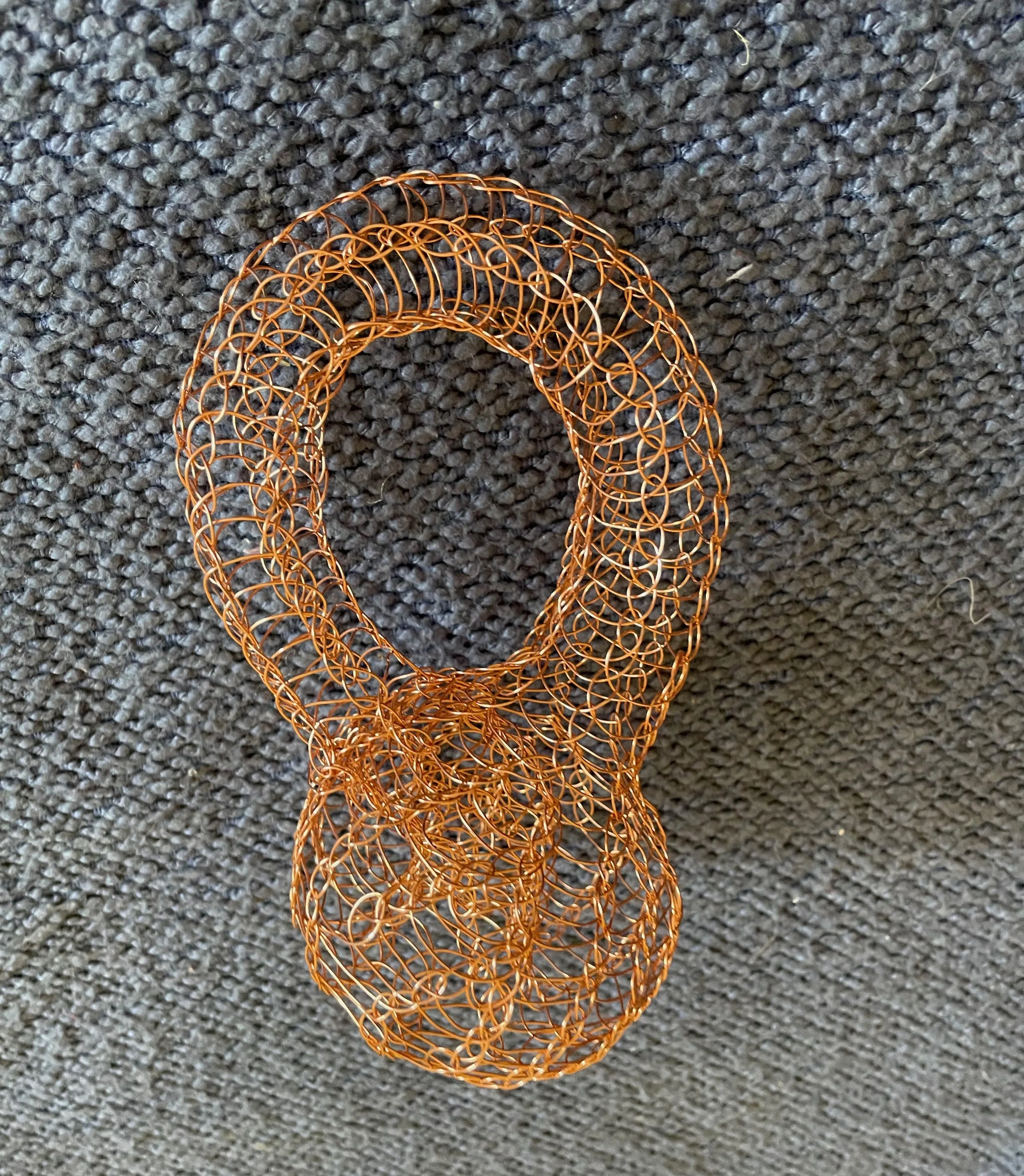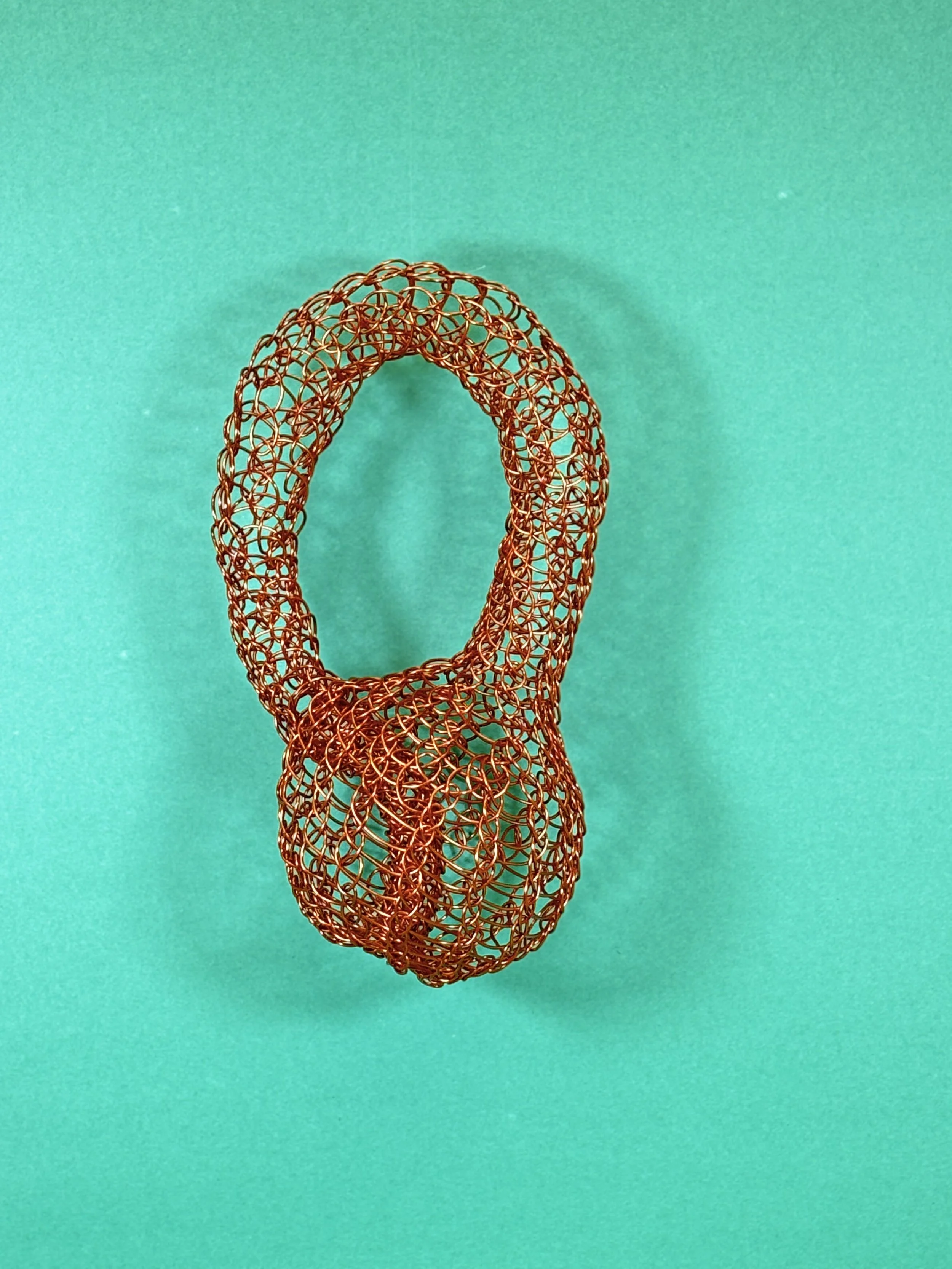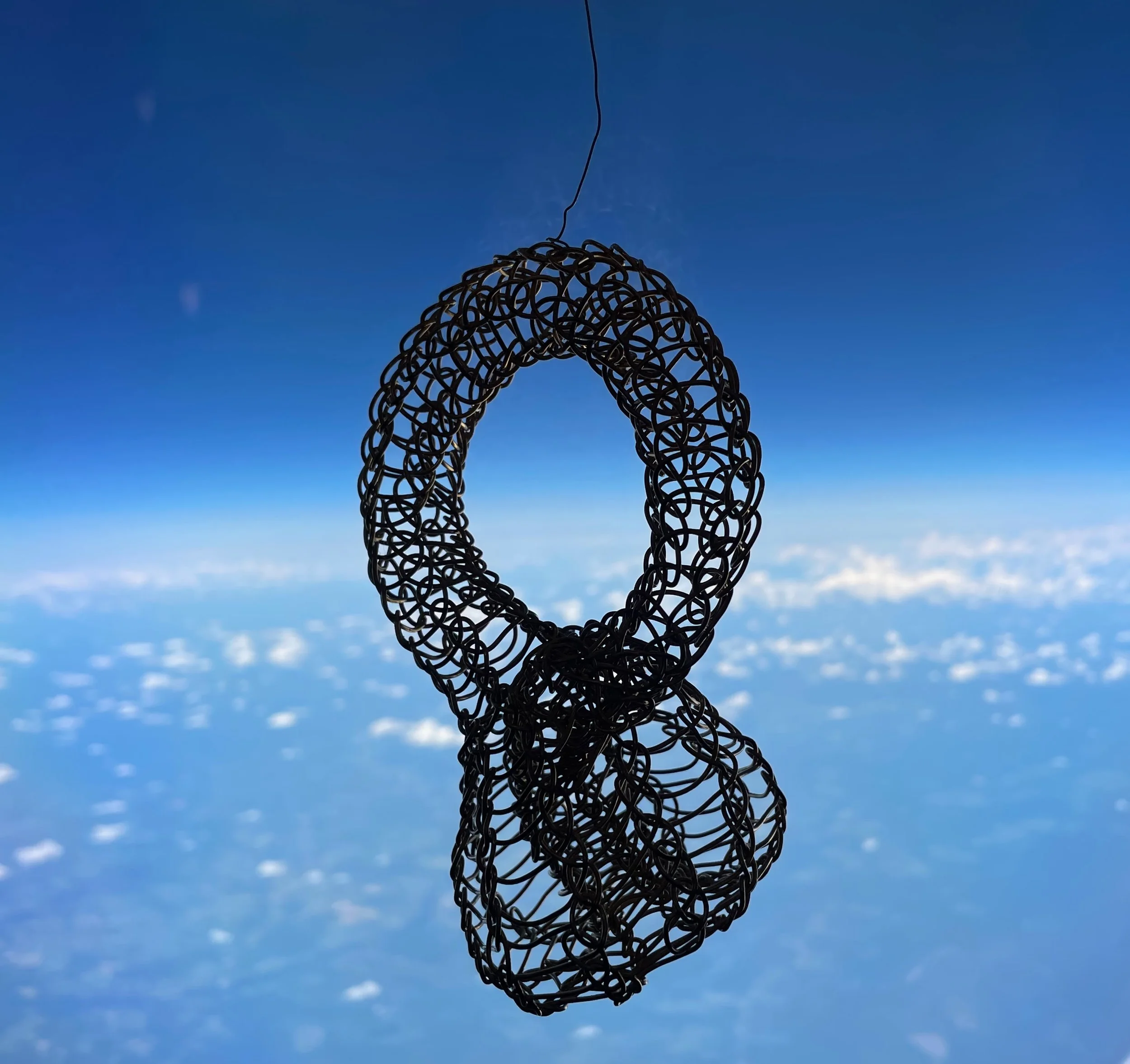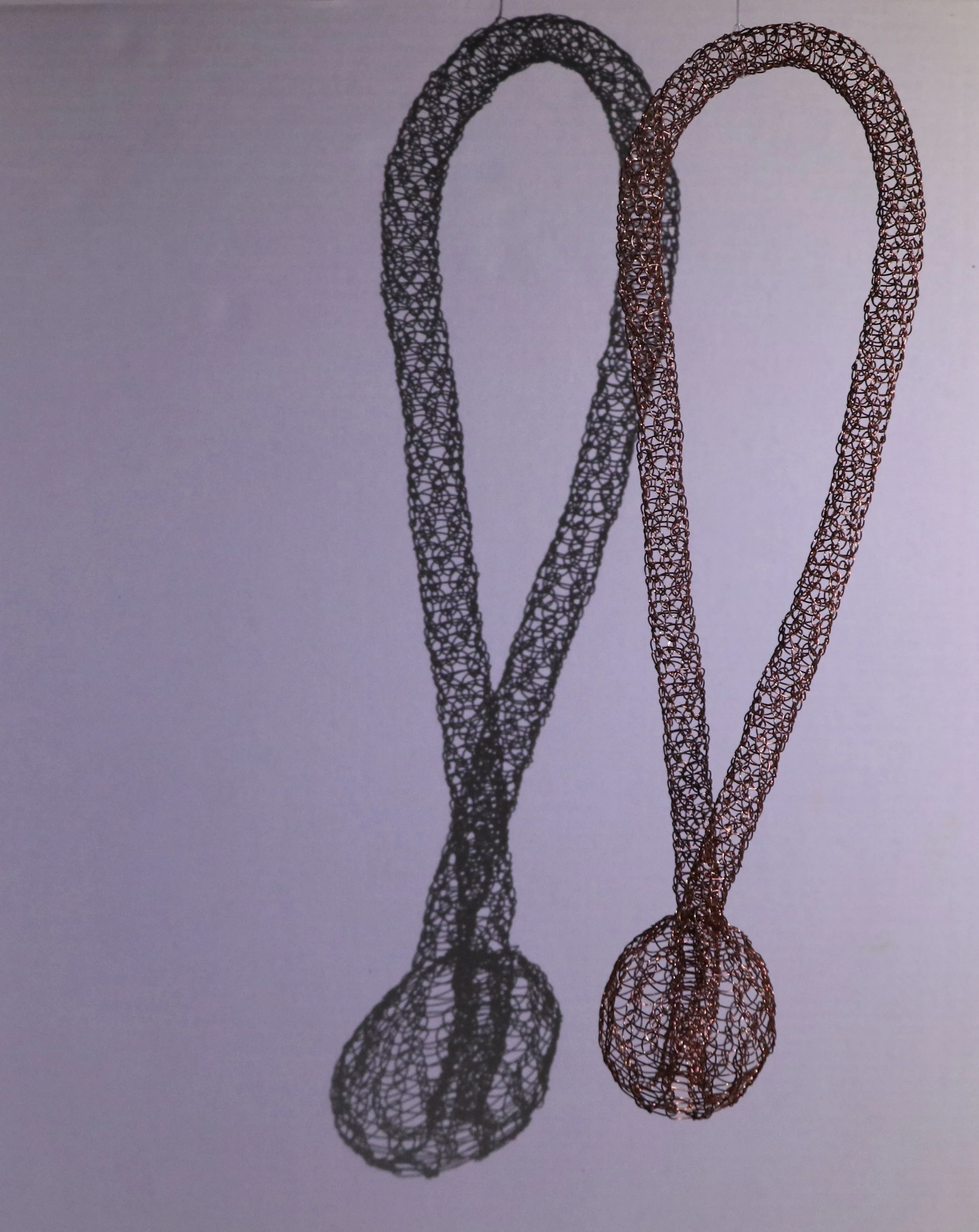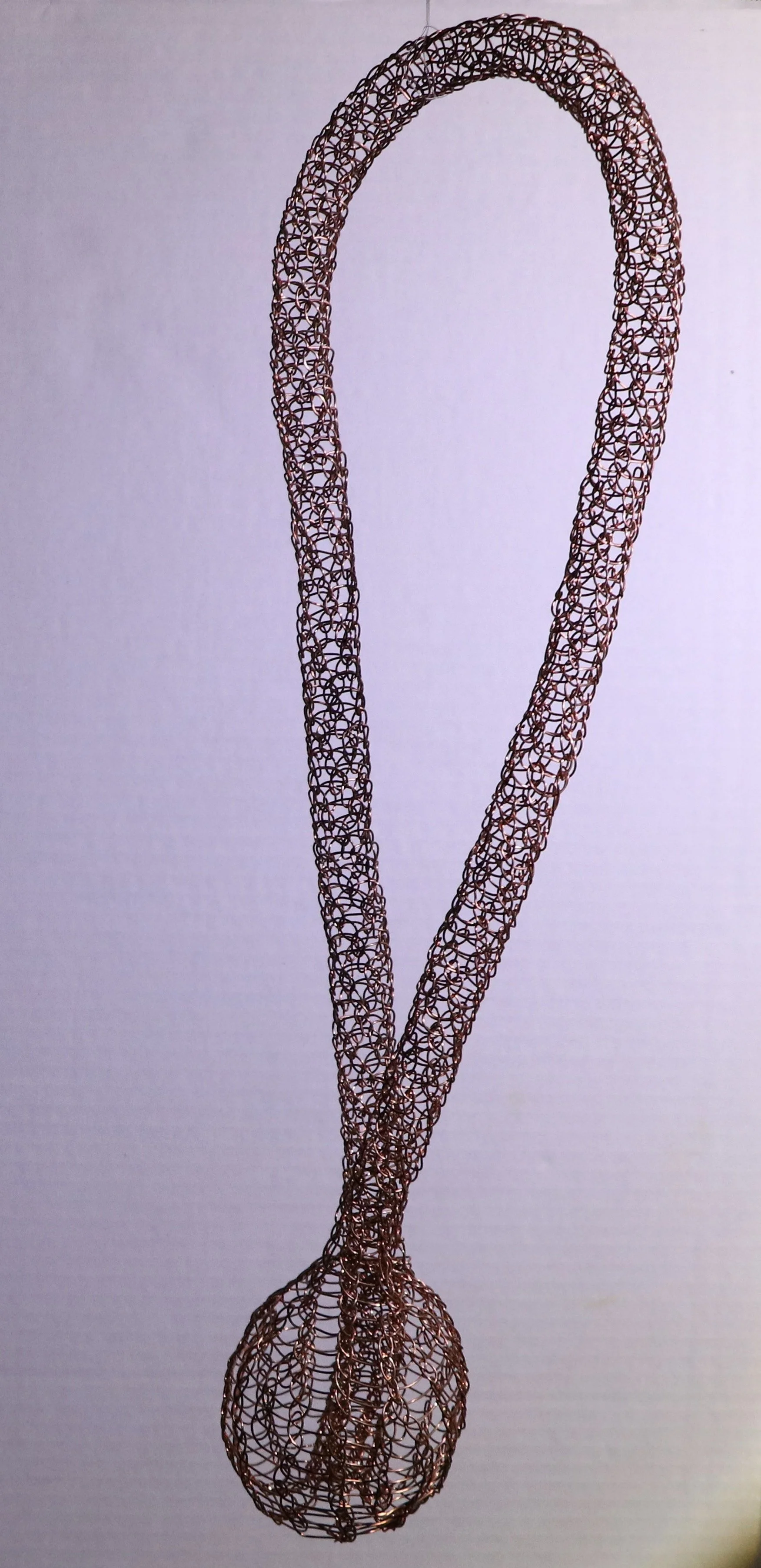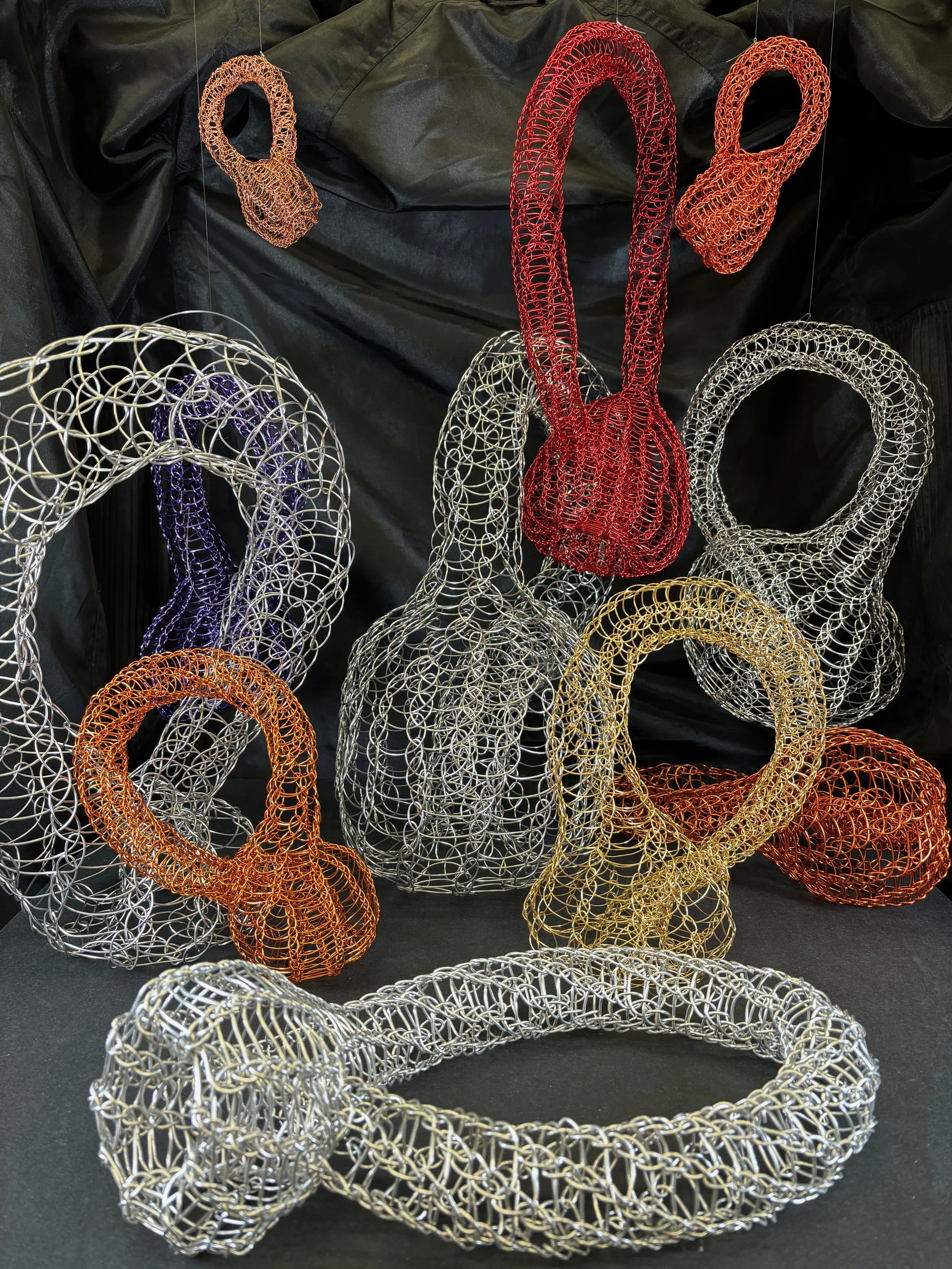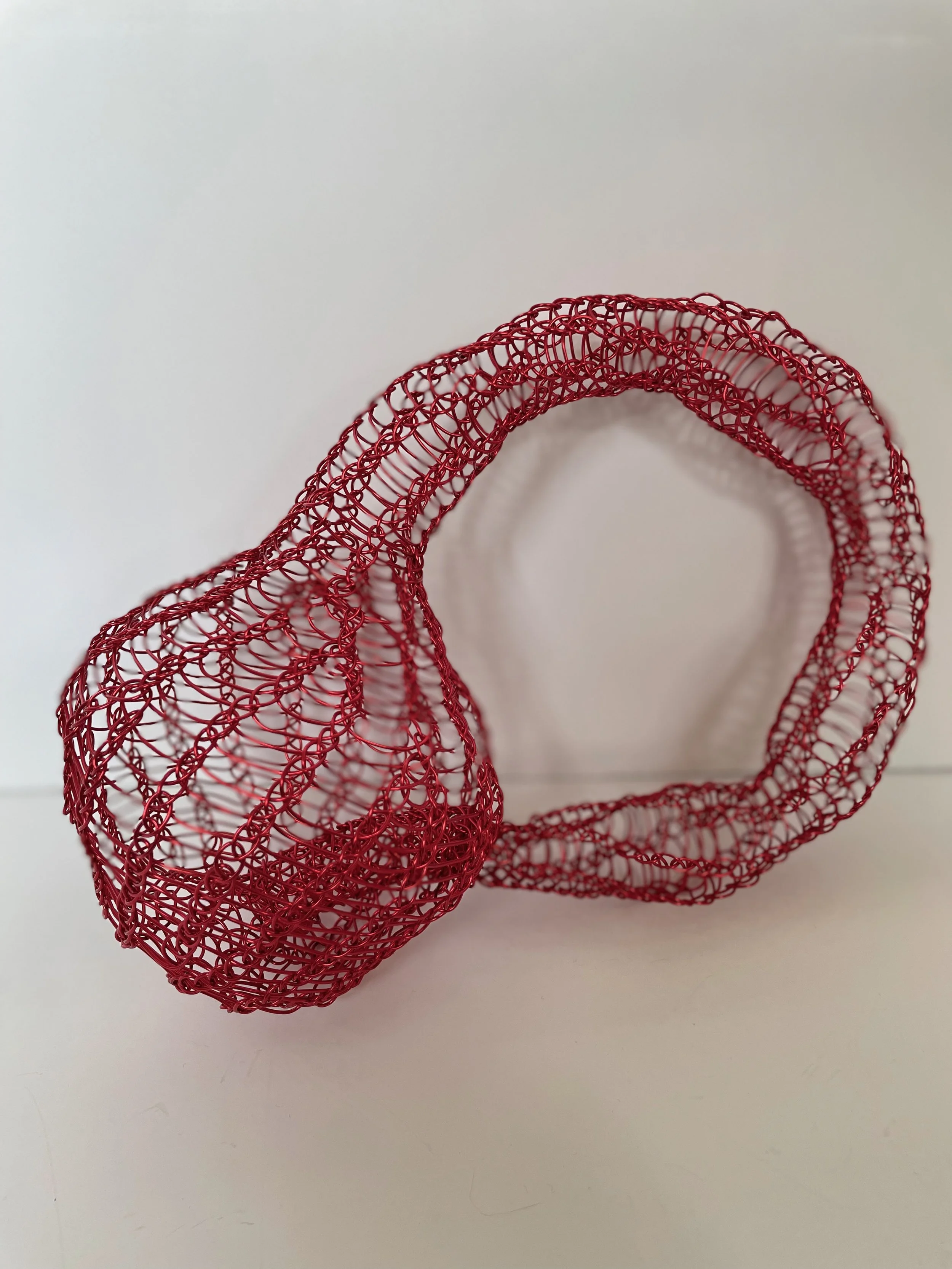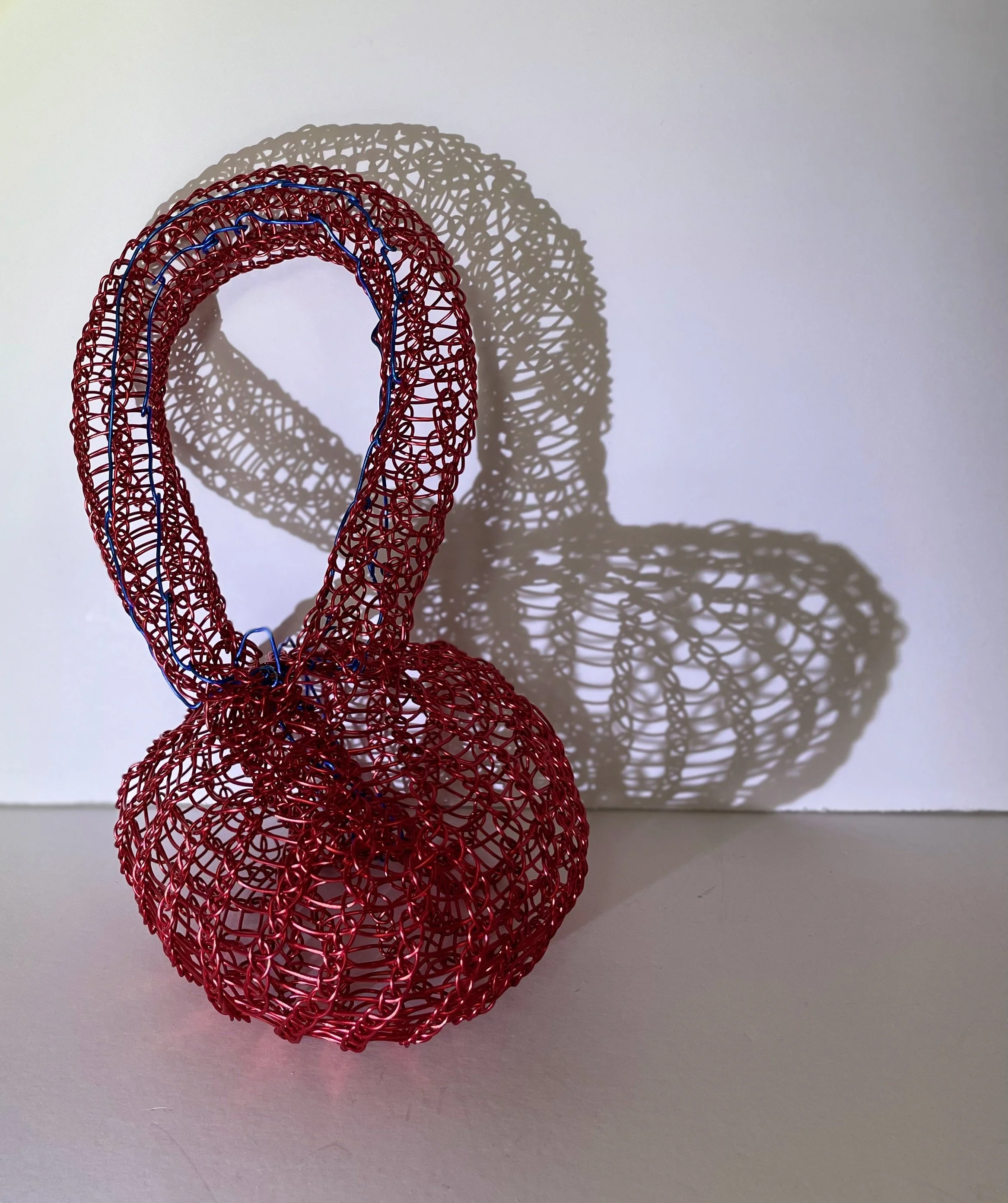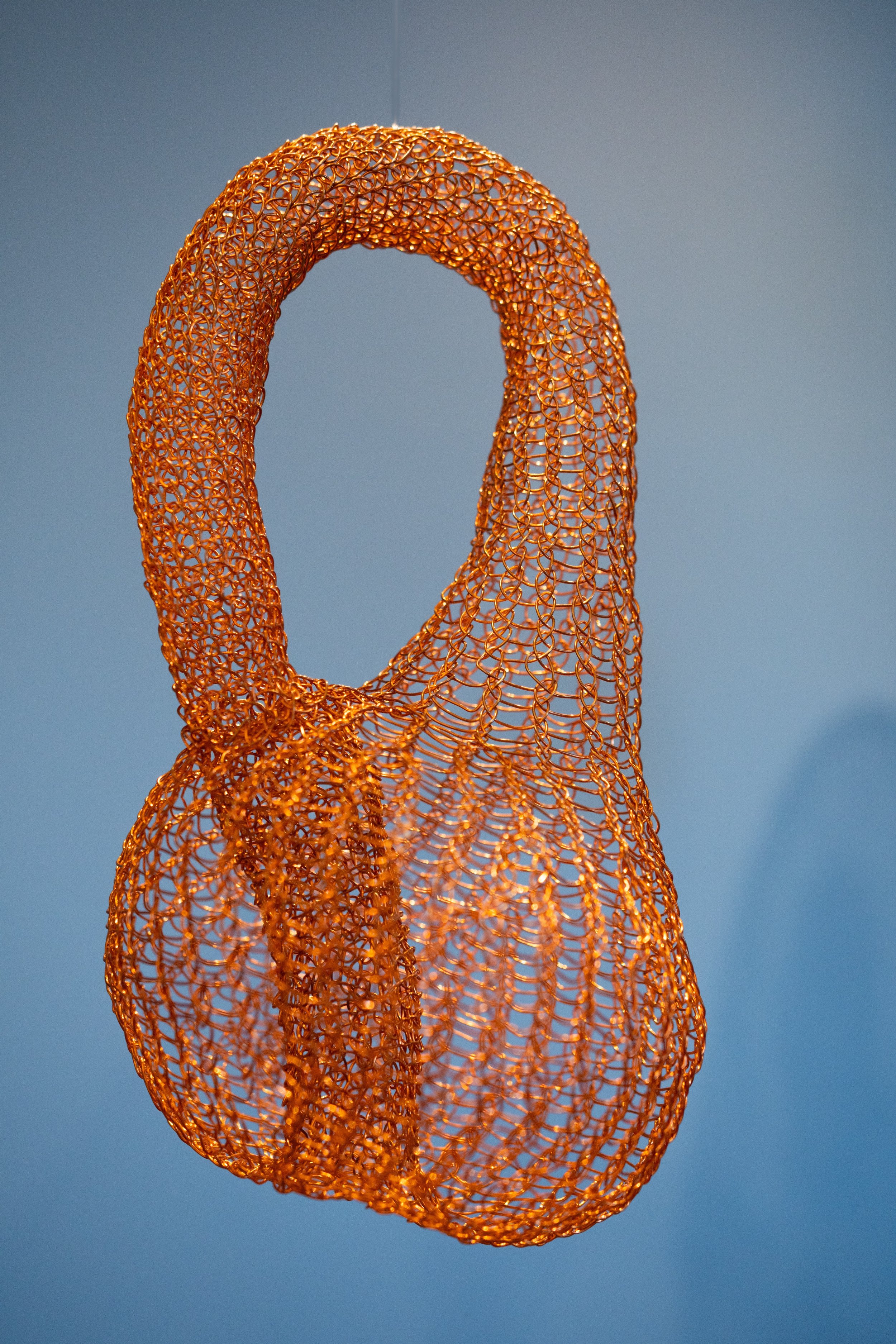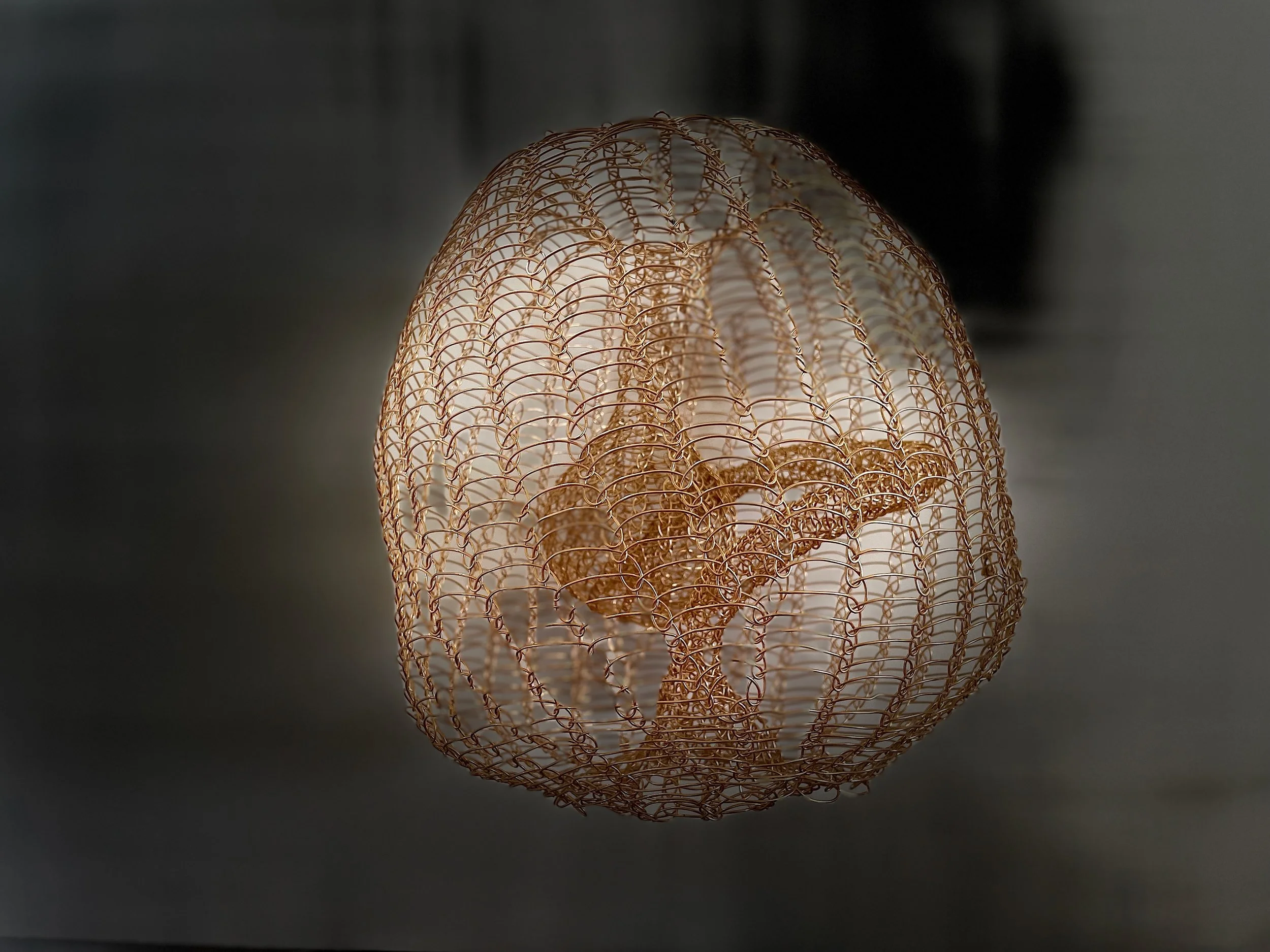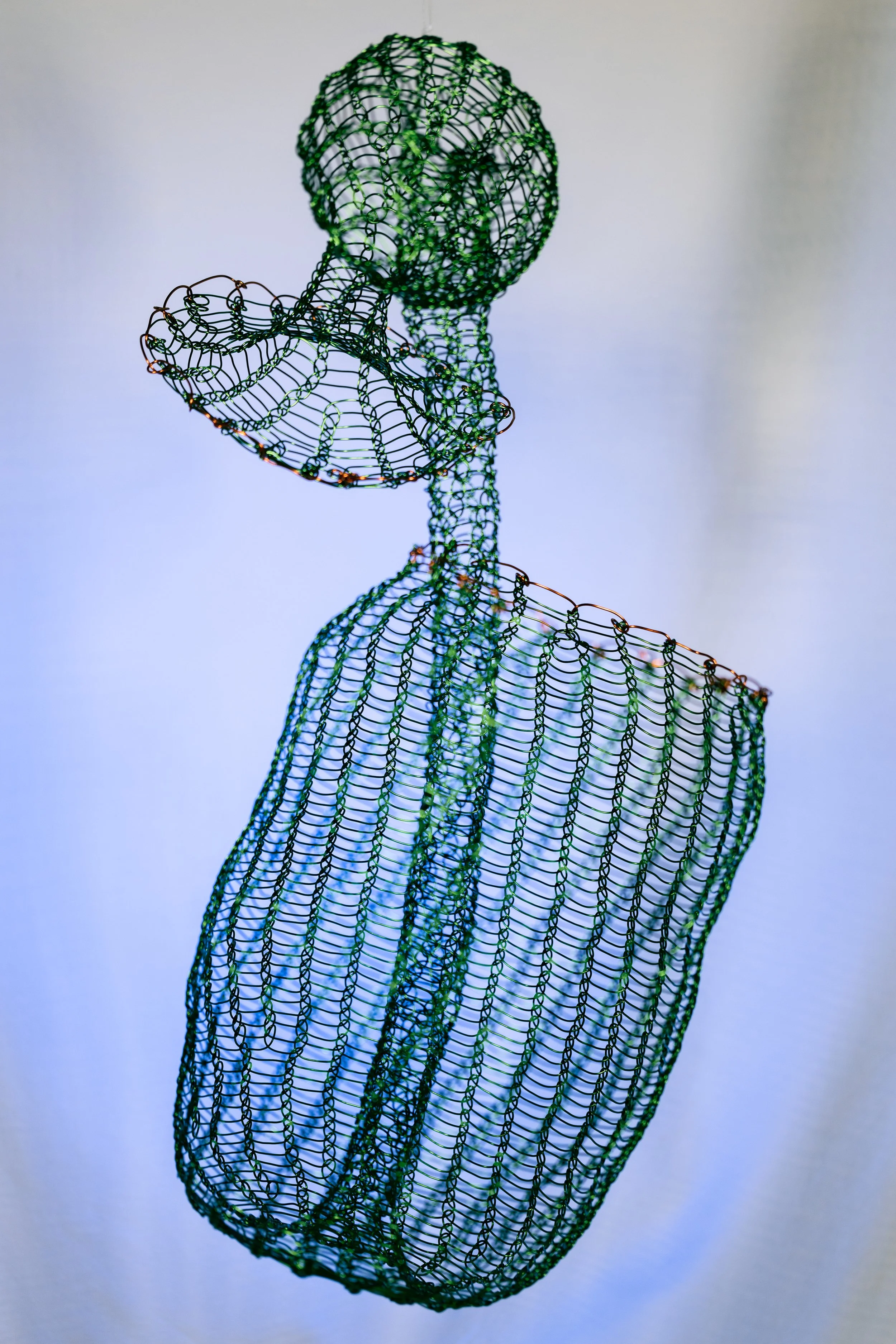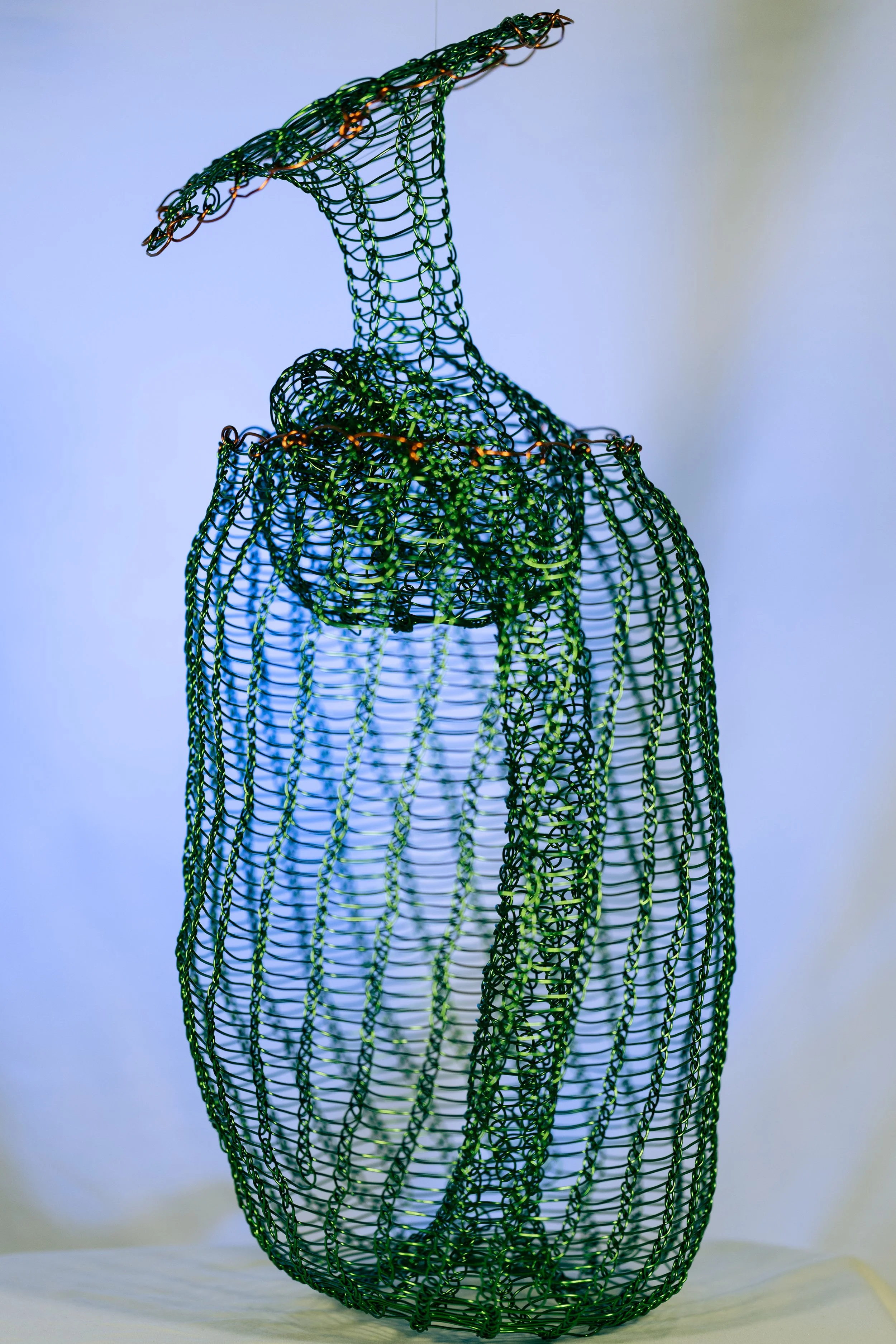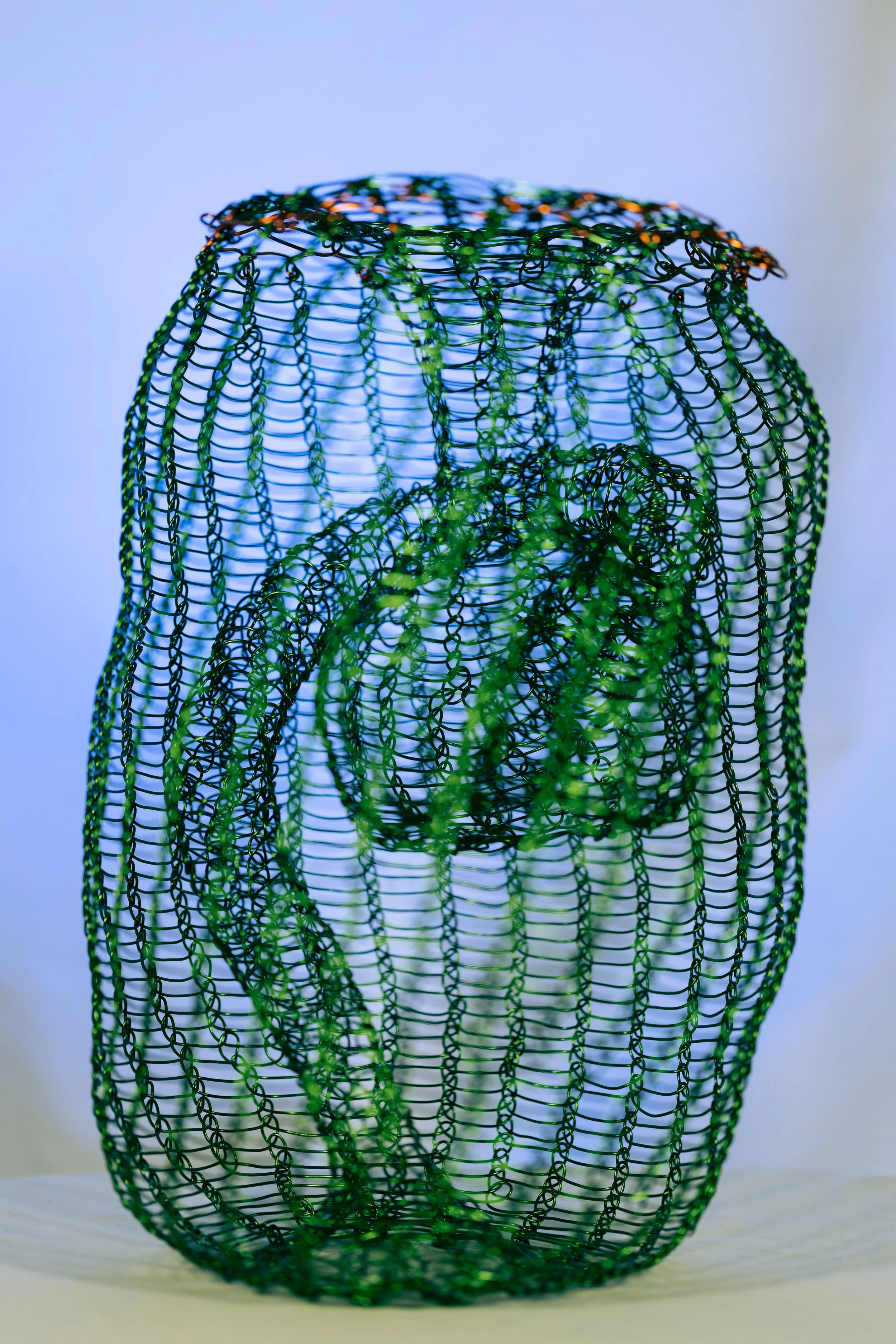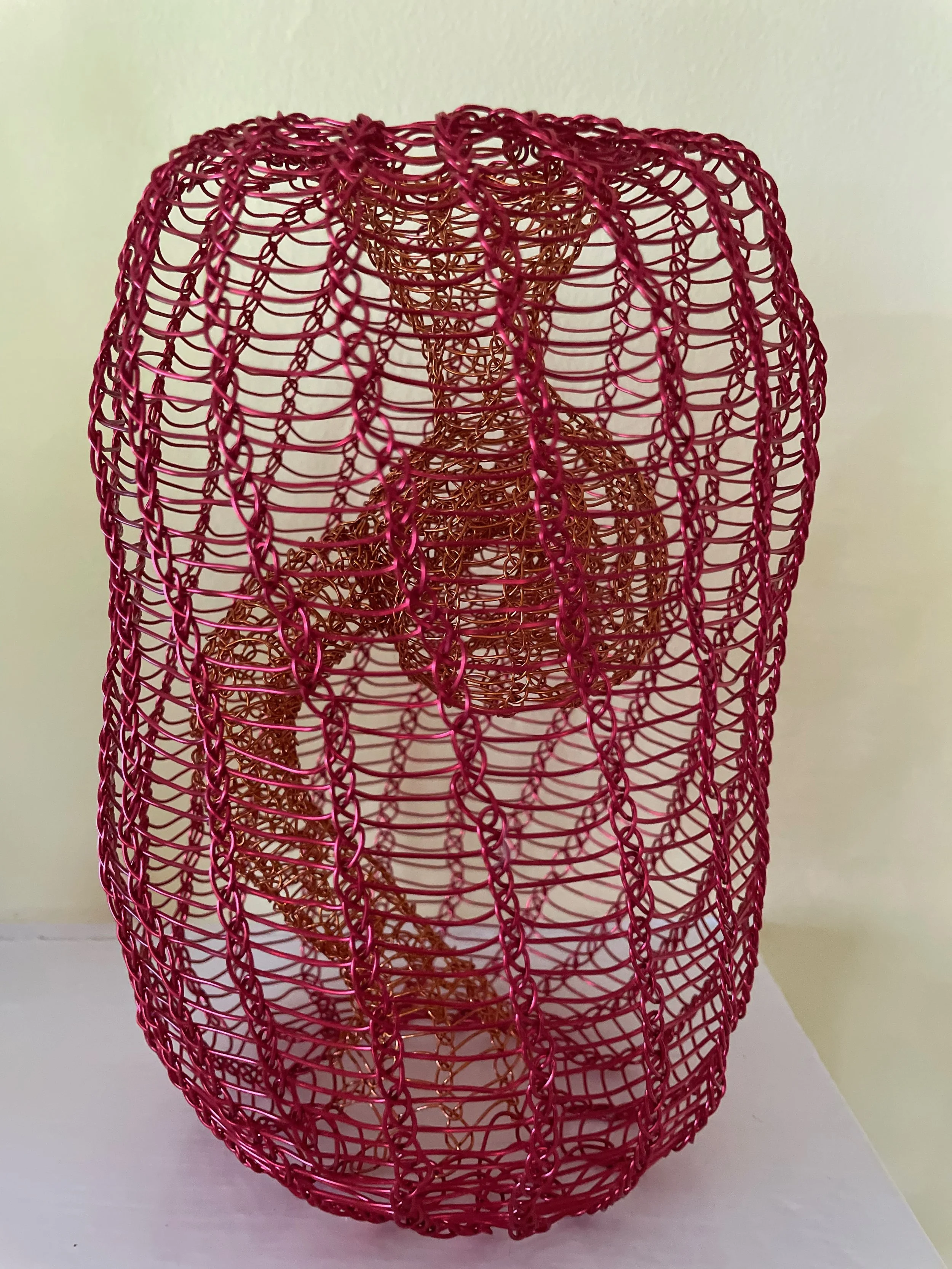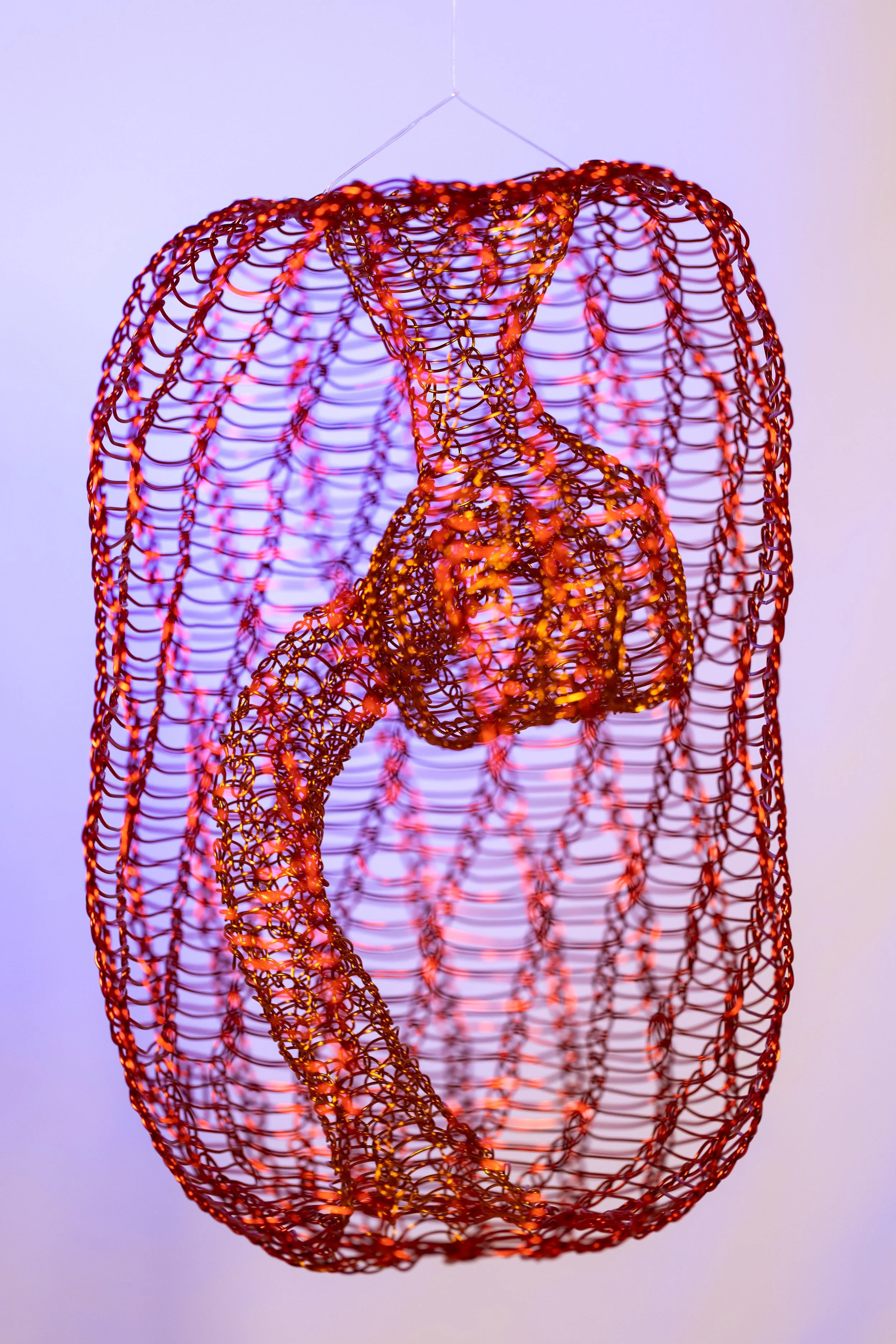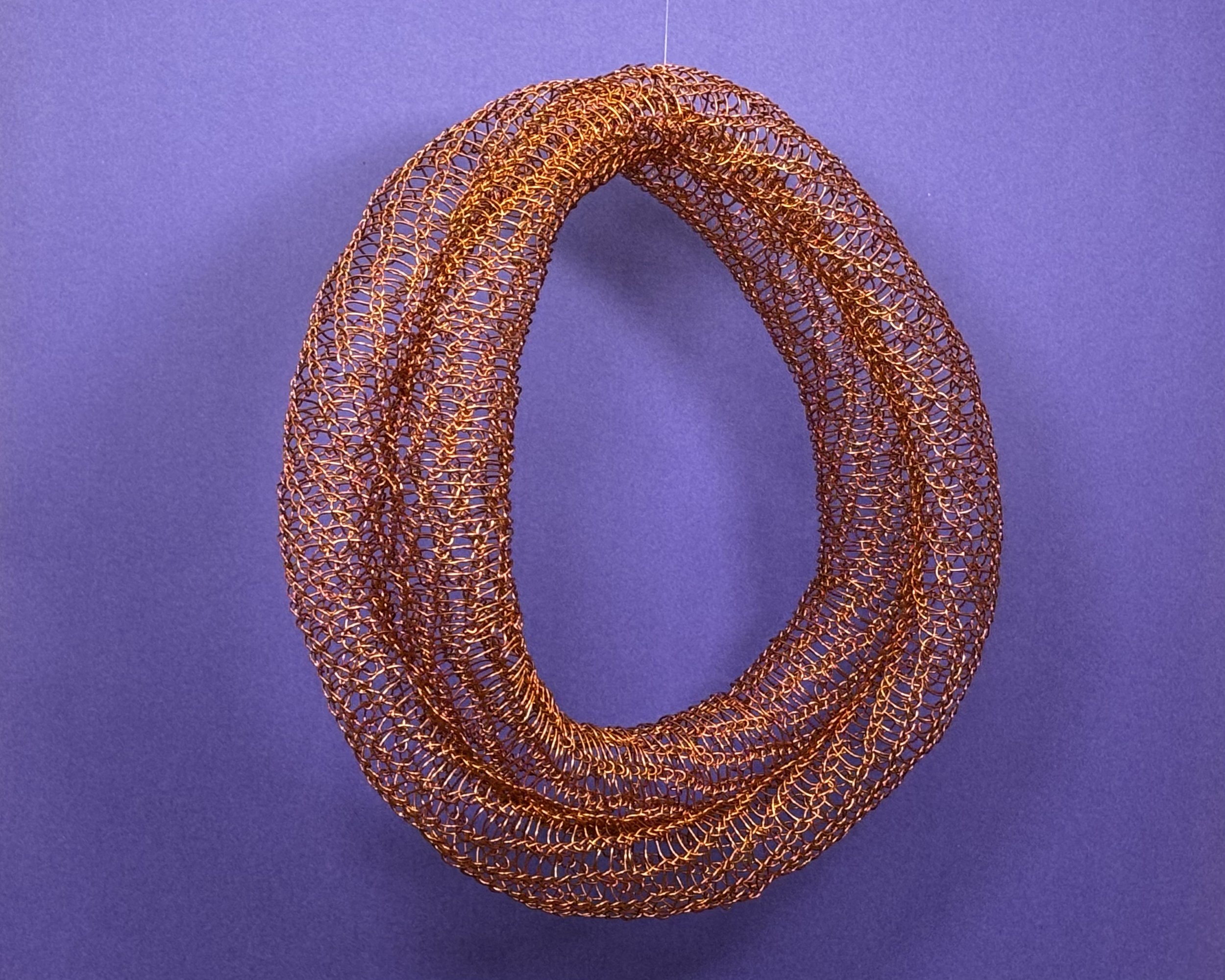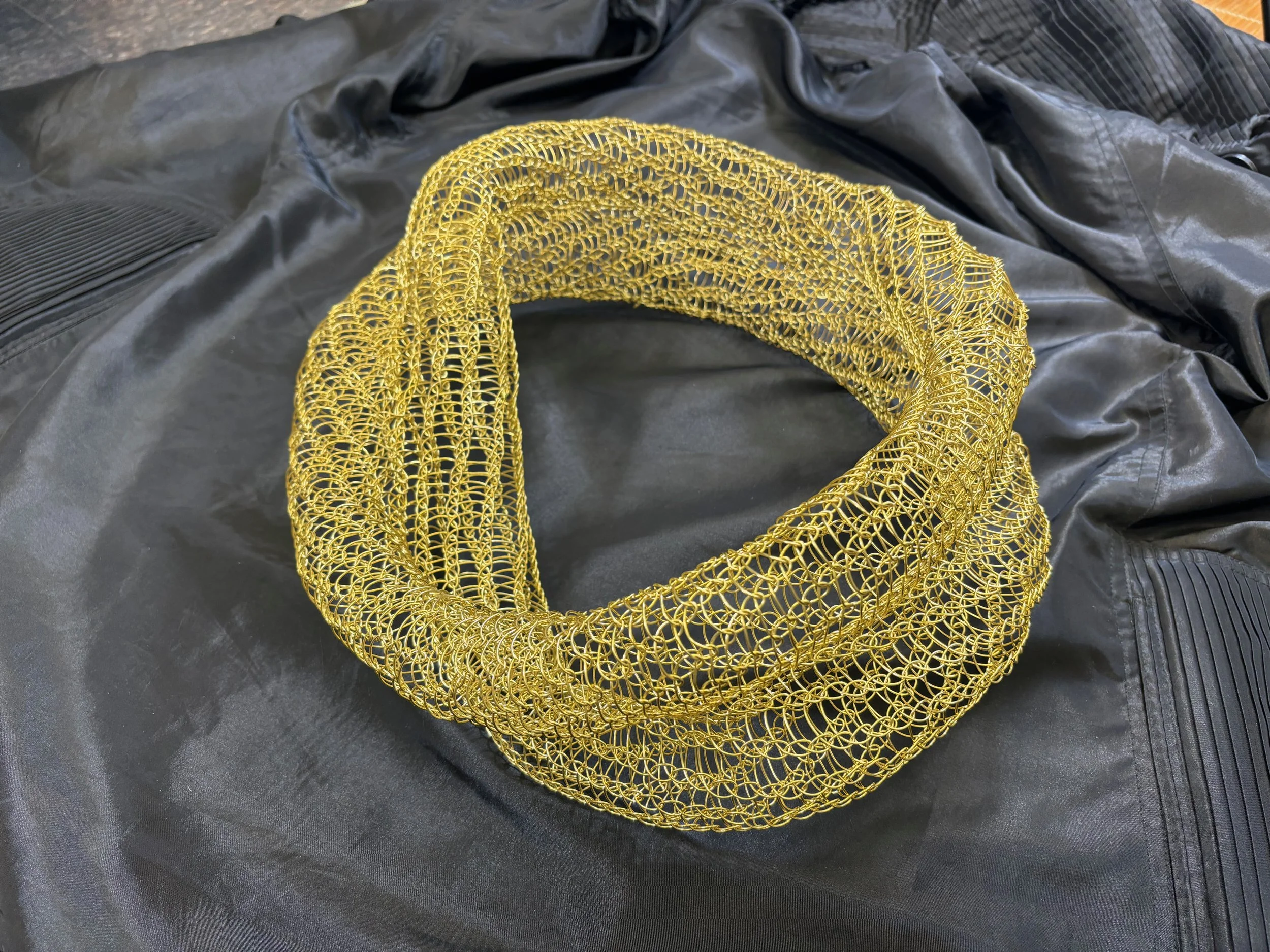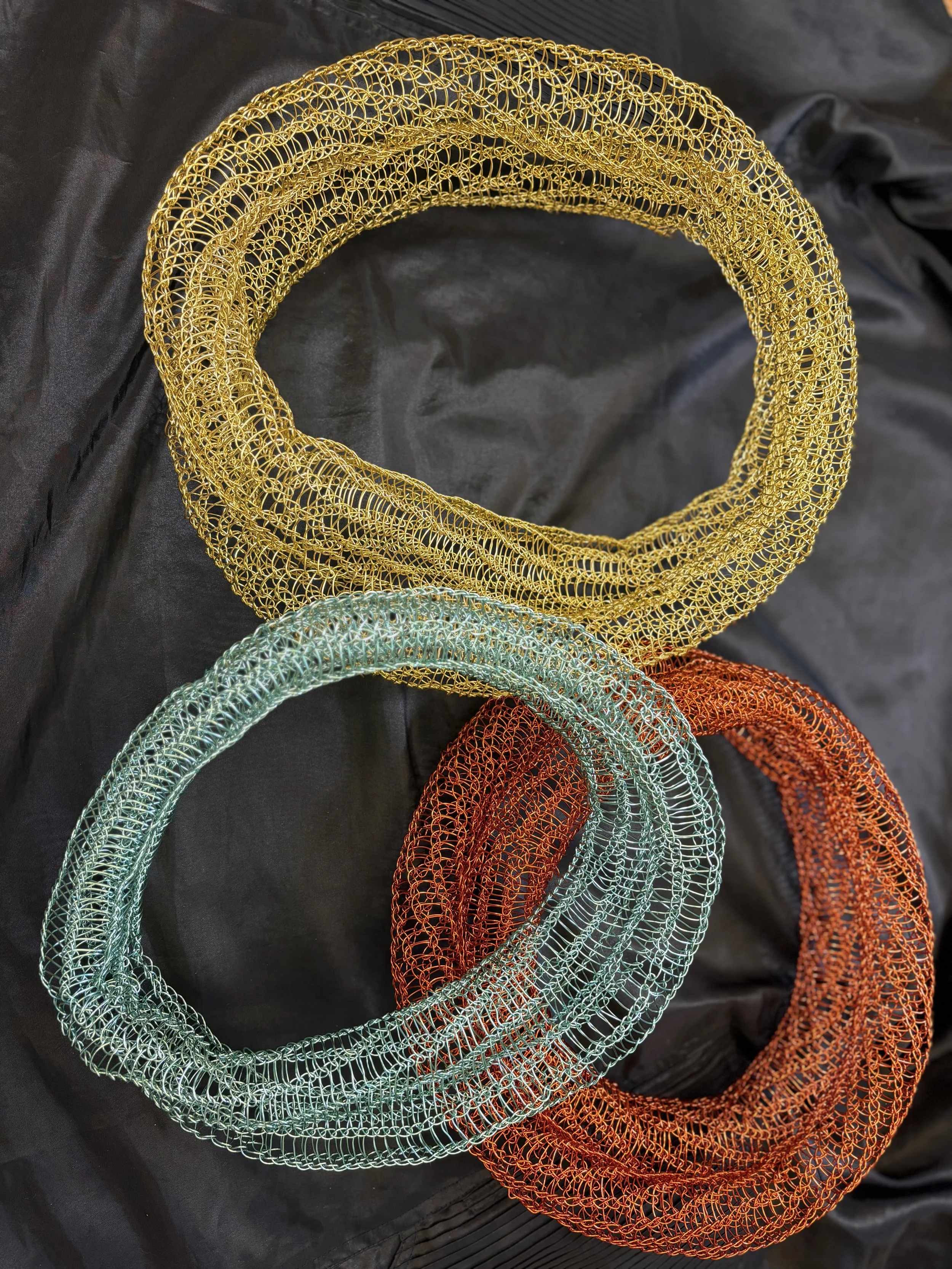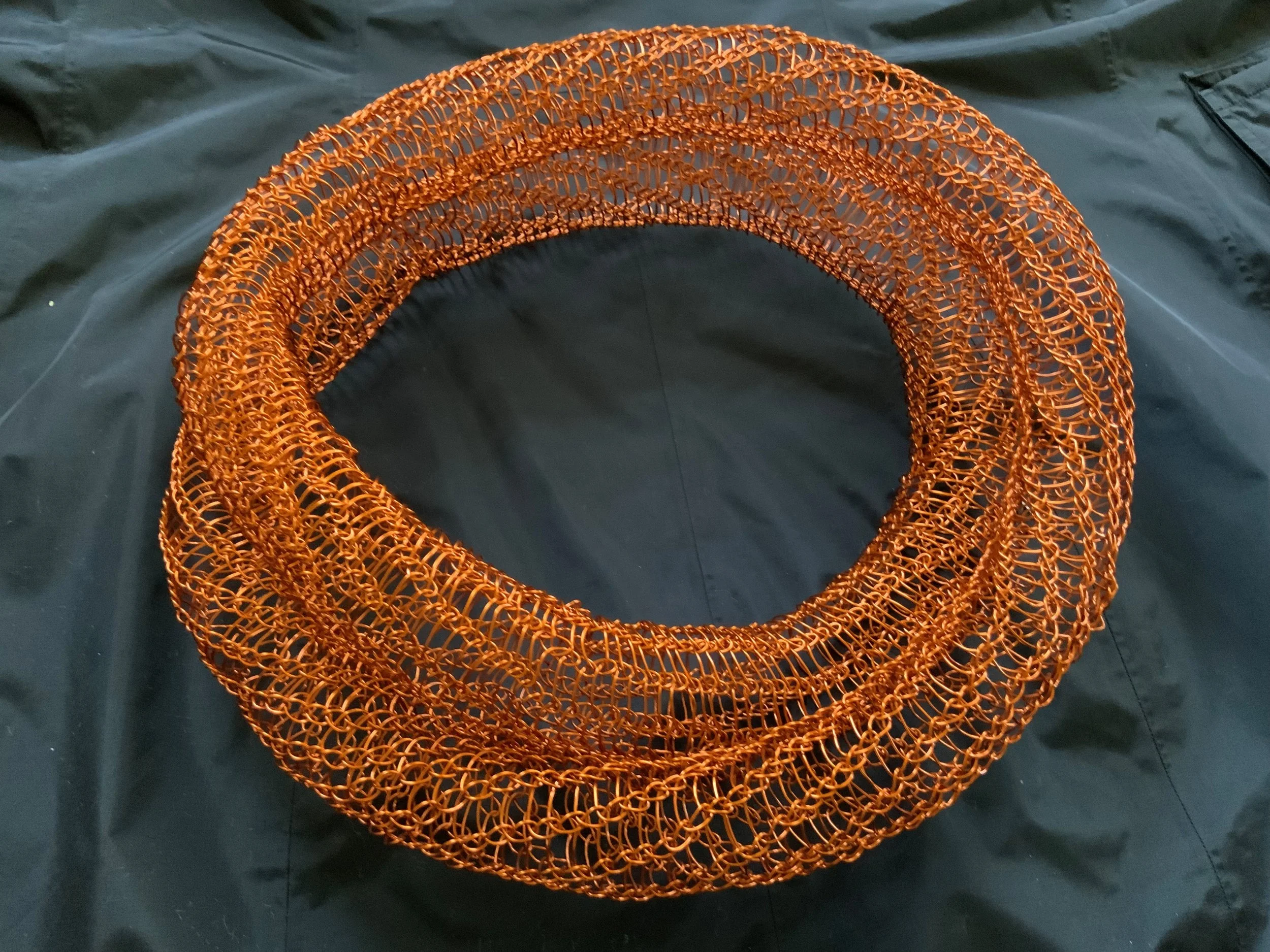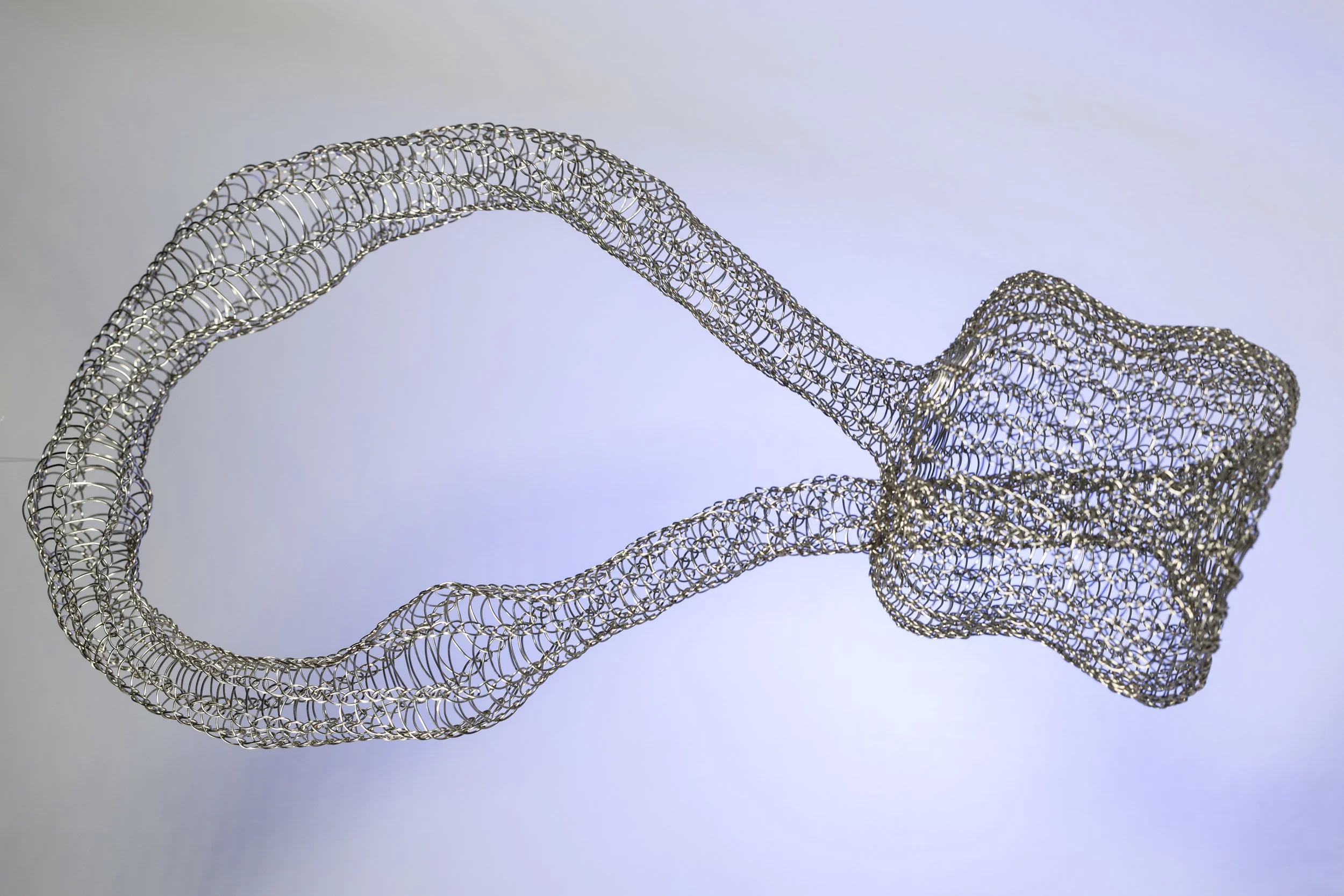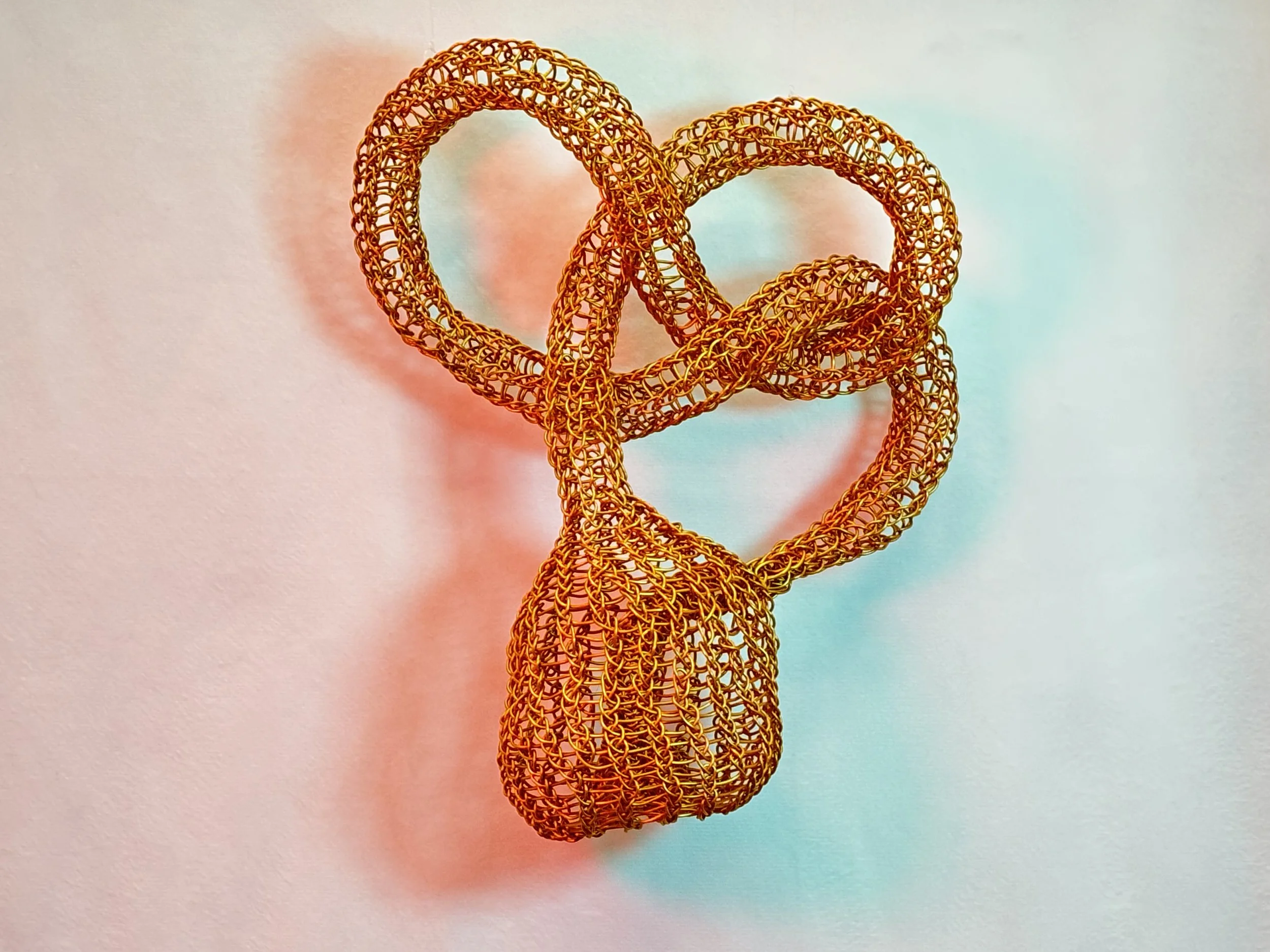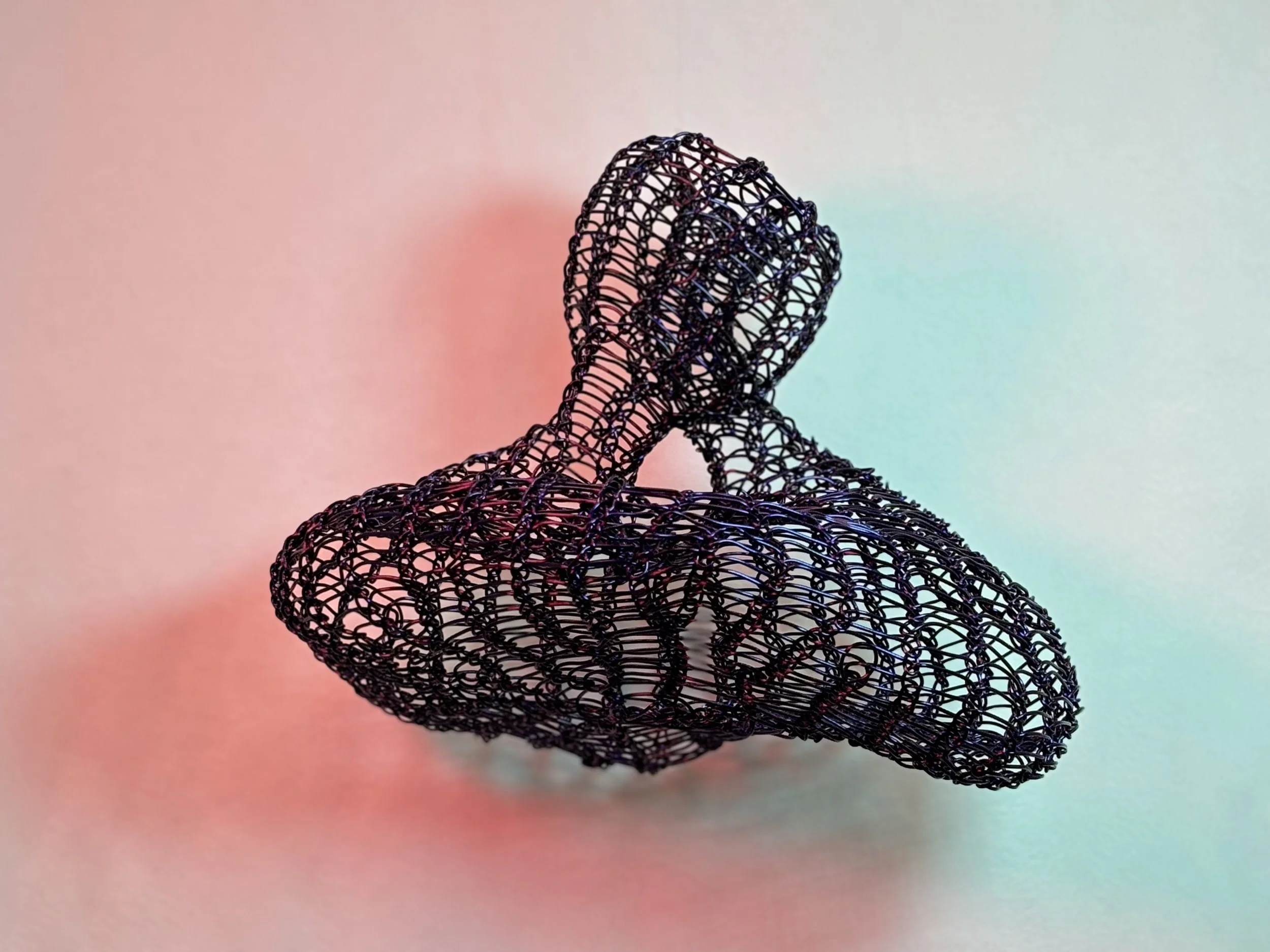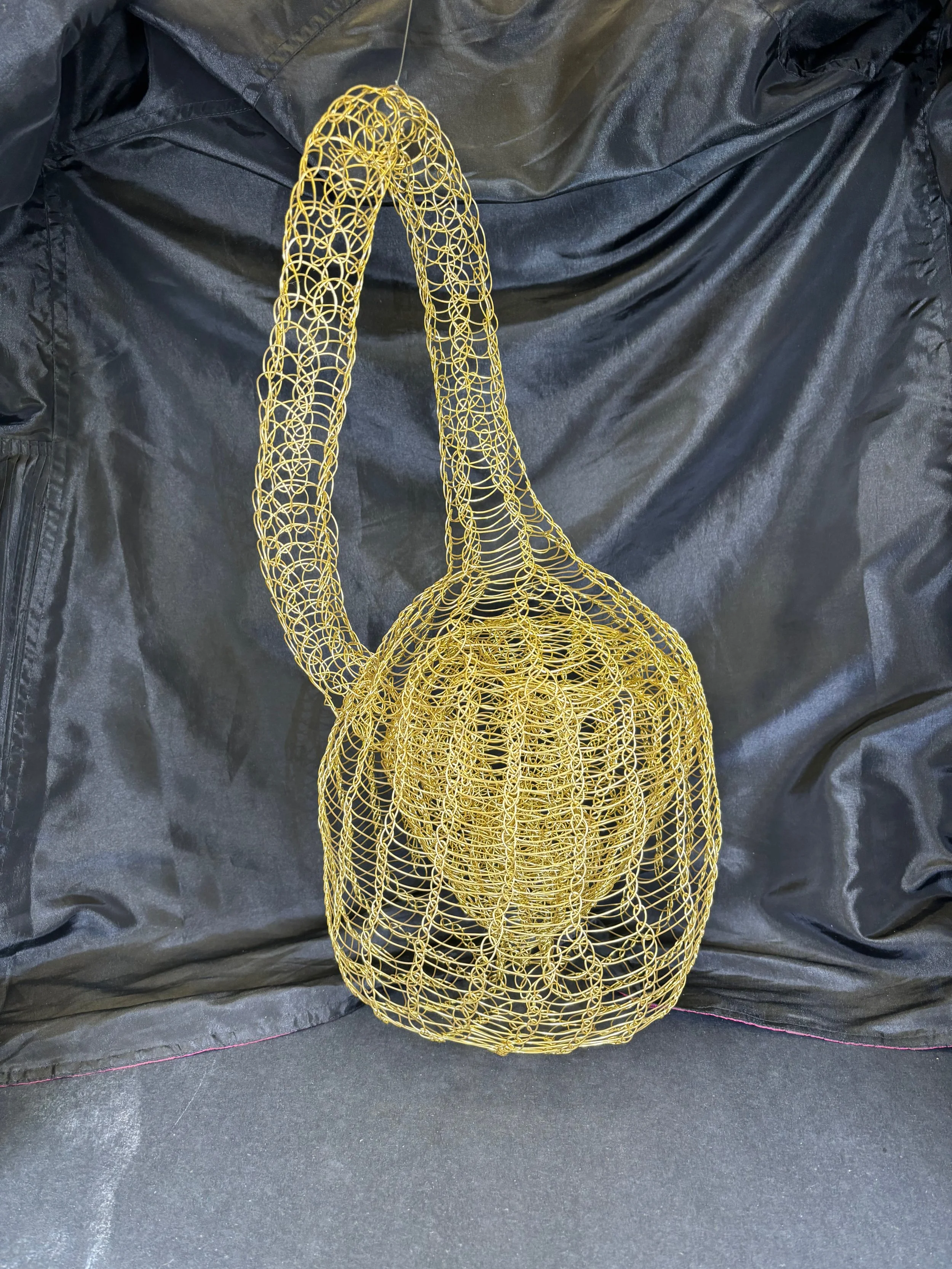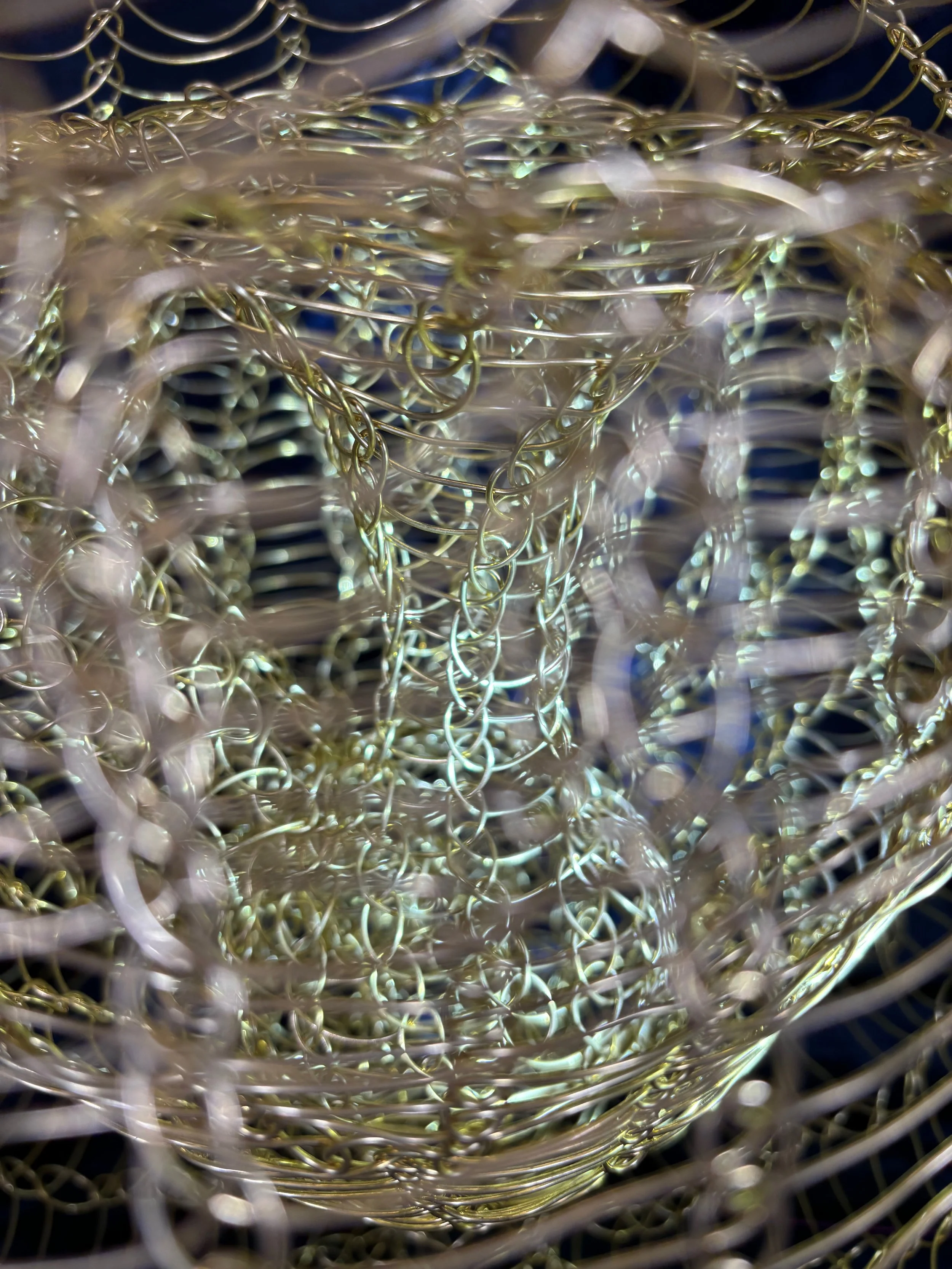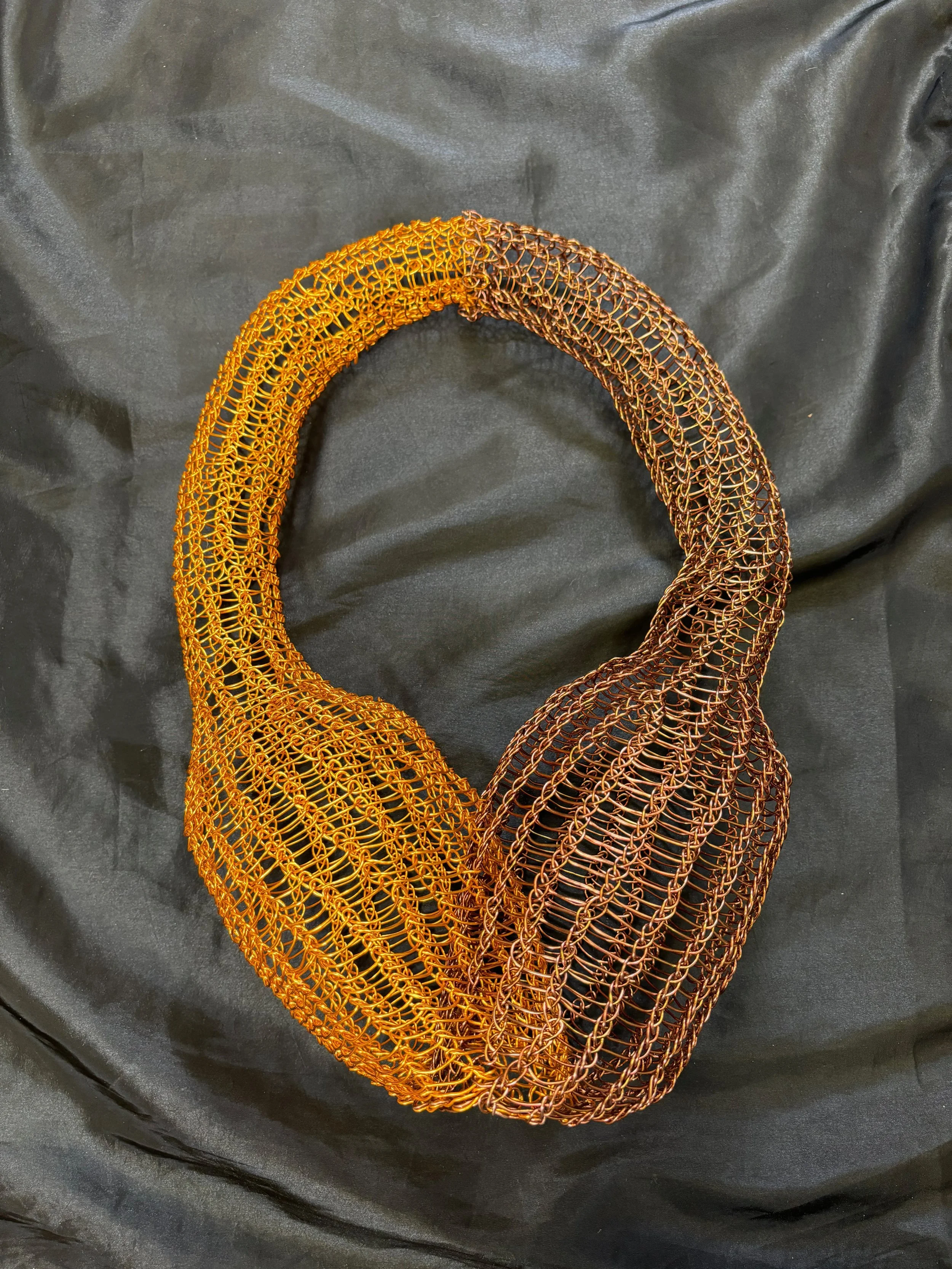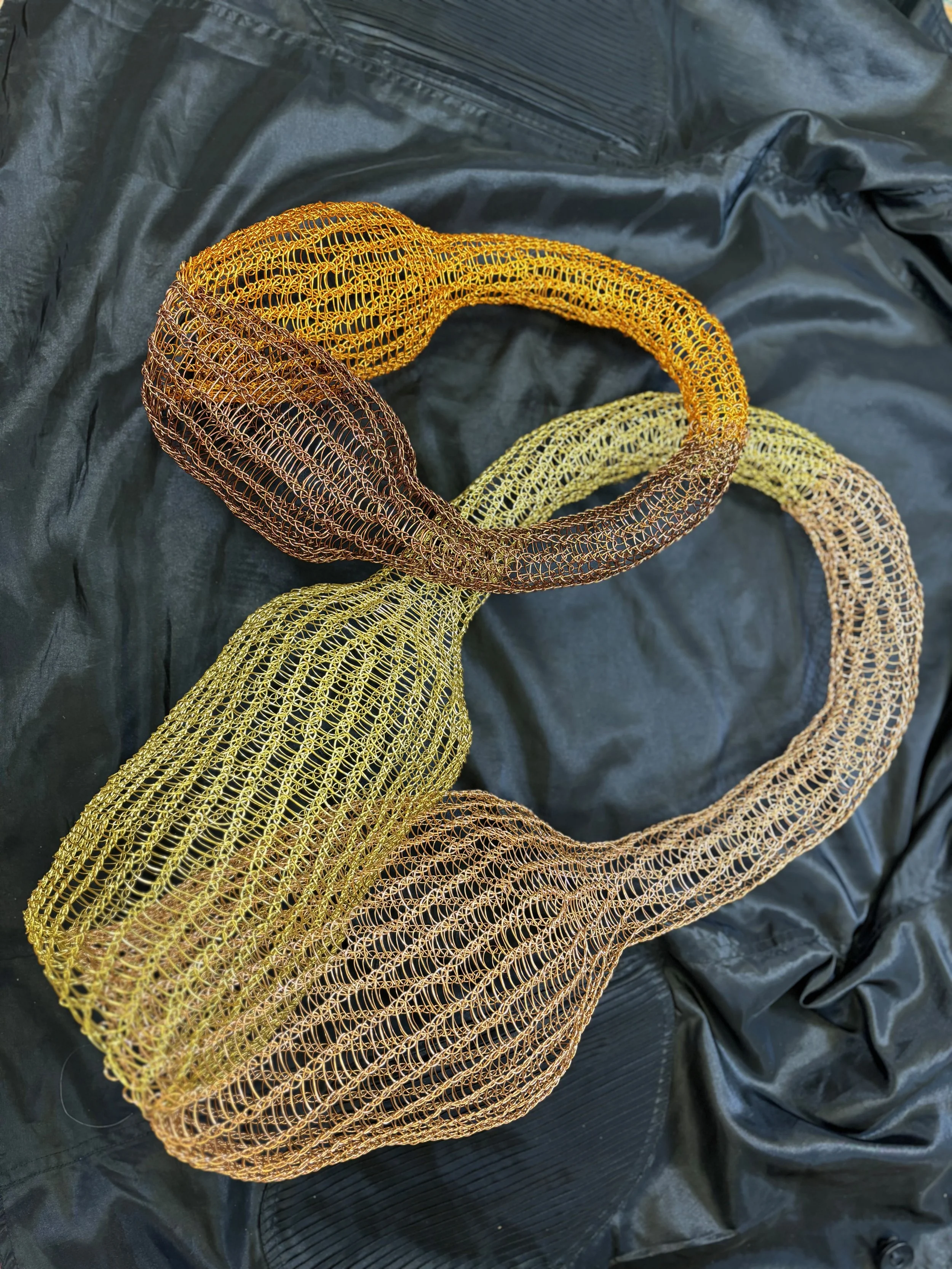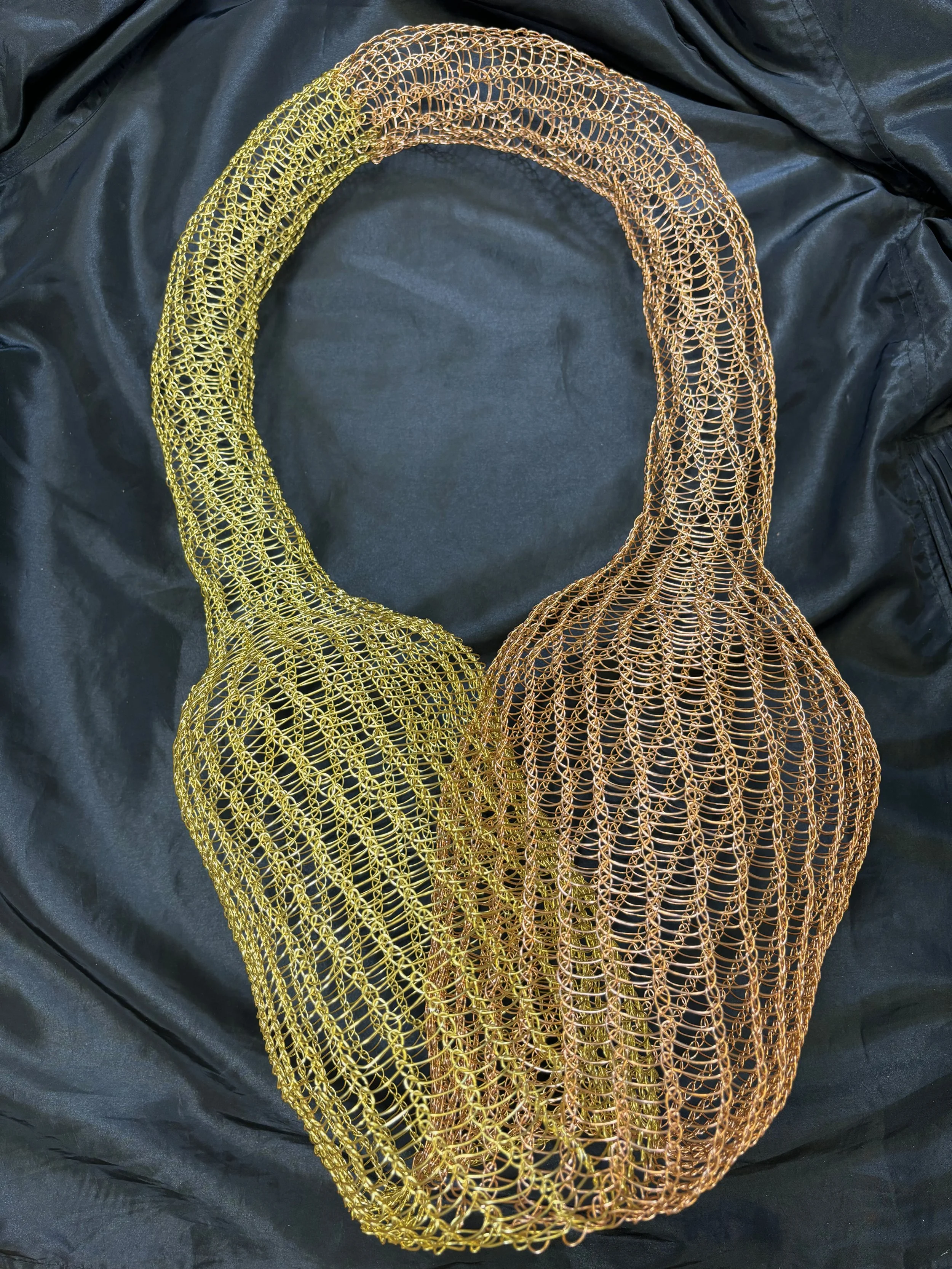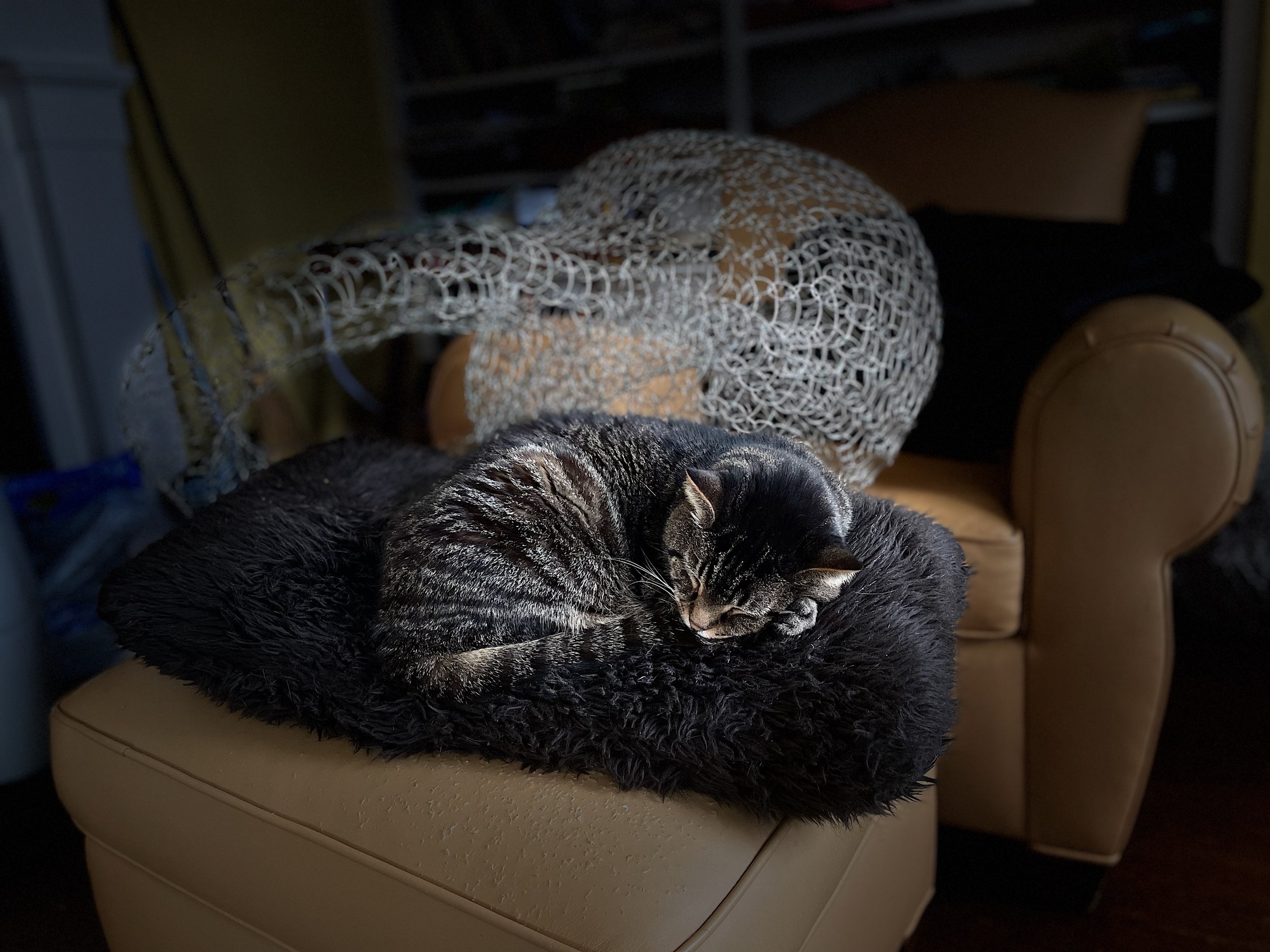
The Klein Bottles
Classical Klein Bottles
"Inside-out” Klein Bottles
A Klein bottle can be obtained by “glueing” opposite sides of a rectangle following the diagram. The glueing occurs in the mathematical mind. Once a Klein bottle is displayed in our three dimensional space, it can take unexpected shapes.
Figure Eight Klein Bottles
Other Klein Bottles
A Klein bottle in a Klein bottle in a Klein bottle
It is just a Klein bottle
Klein Bottles With Singularities
About the categories of Klein bottles listed below
The list above is not a mathematical classification. It is based on a combination of visual and mathematical characteristics, and whatever I have finished. I am always working in new shapes.
I was surprised to learn that the Classical and the Inside-Out Klein bottles can smoothly deformed one into the other.
The Figure Eight one, on the other hand, cannot be smoothly deformed into the Classical, but this does not make it less of a Klein bottle.
For a non-expert discussion on classification of the Klein bottles bottles up to smooth deformation within our three-dimensional space, please refer to Carlo Sequin's article. Konrad Polthier wrote another user friendly article in this area .
The first Klein bottle
In 1882, Felix Klein (1849-19450, German mathematician) described what we now call a Klein bottle.
“Finally, certain unifacial surfaces with no boundaries belong to this class. An idea of these may be formed by turning one end of a piece of india-rubber tubing inside out and then making it pass through itself so that the outer surface of one end meets the inner surface of the other.”
